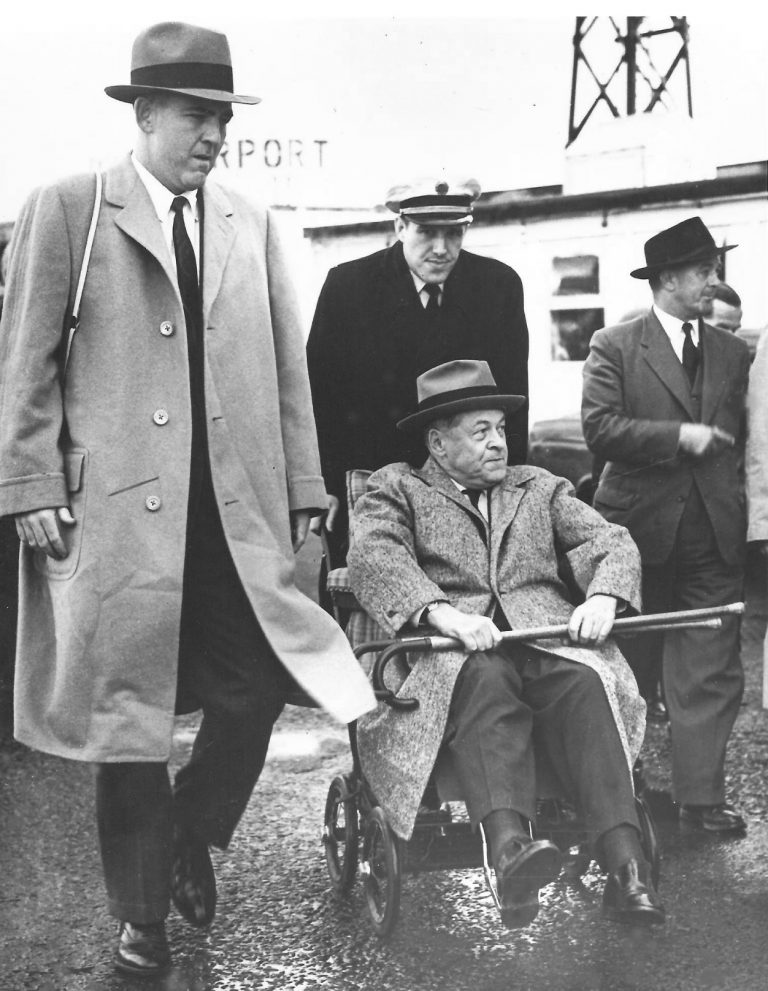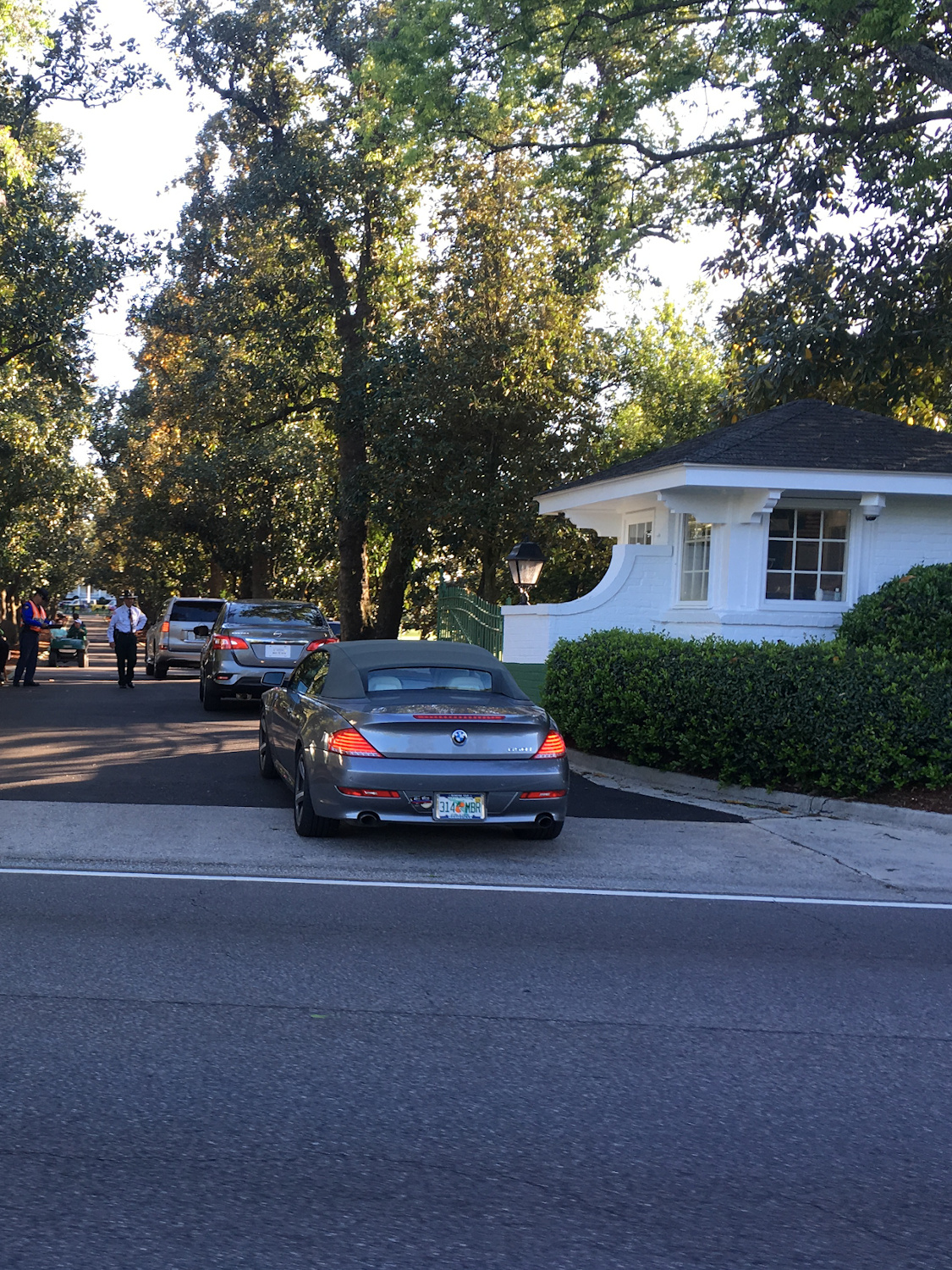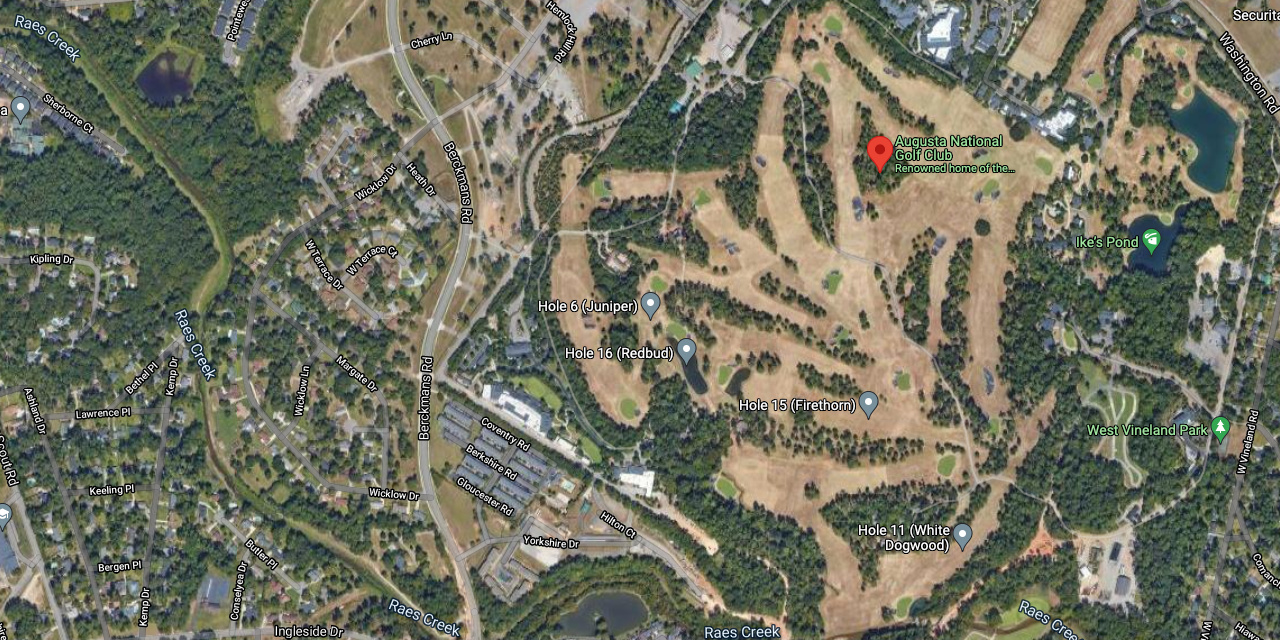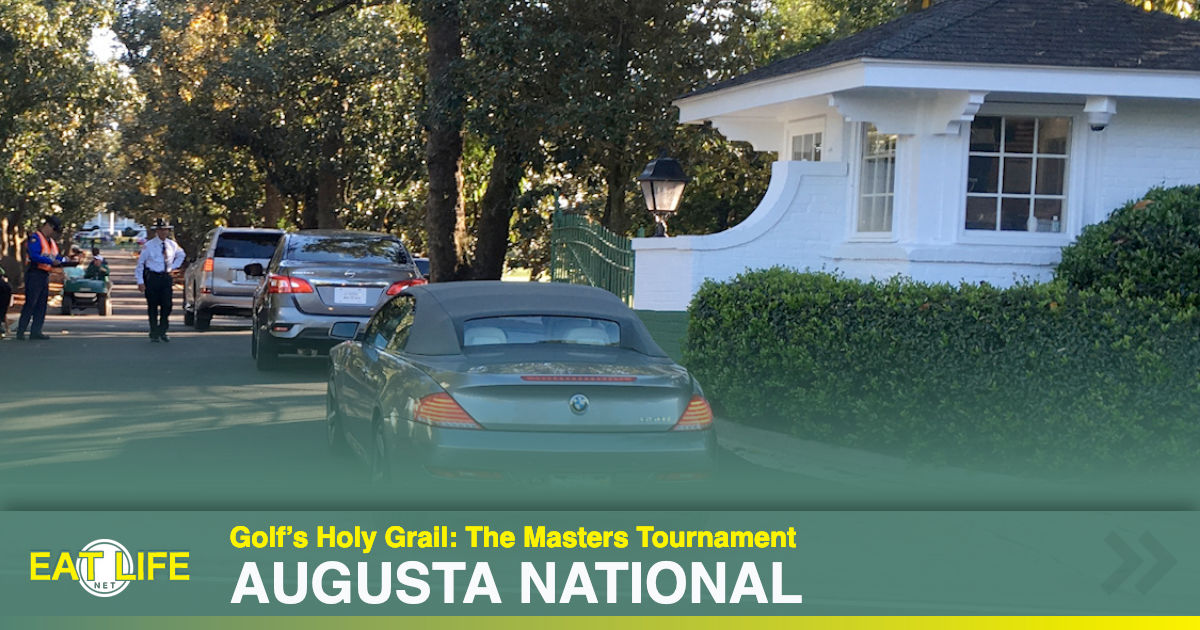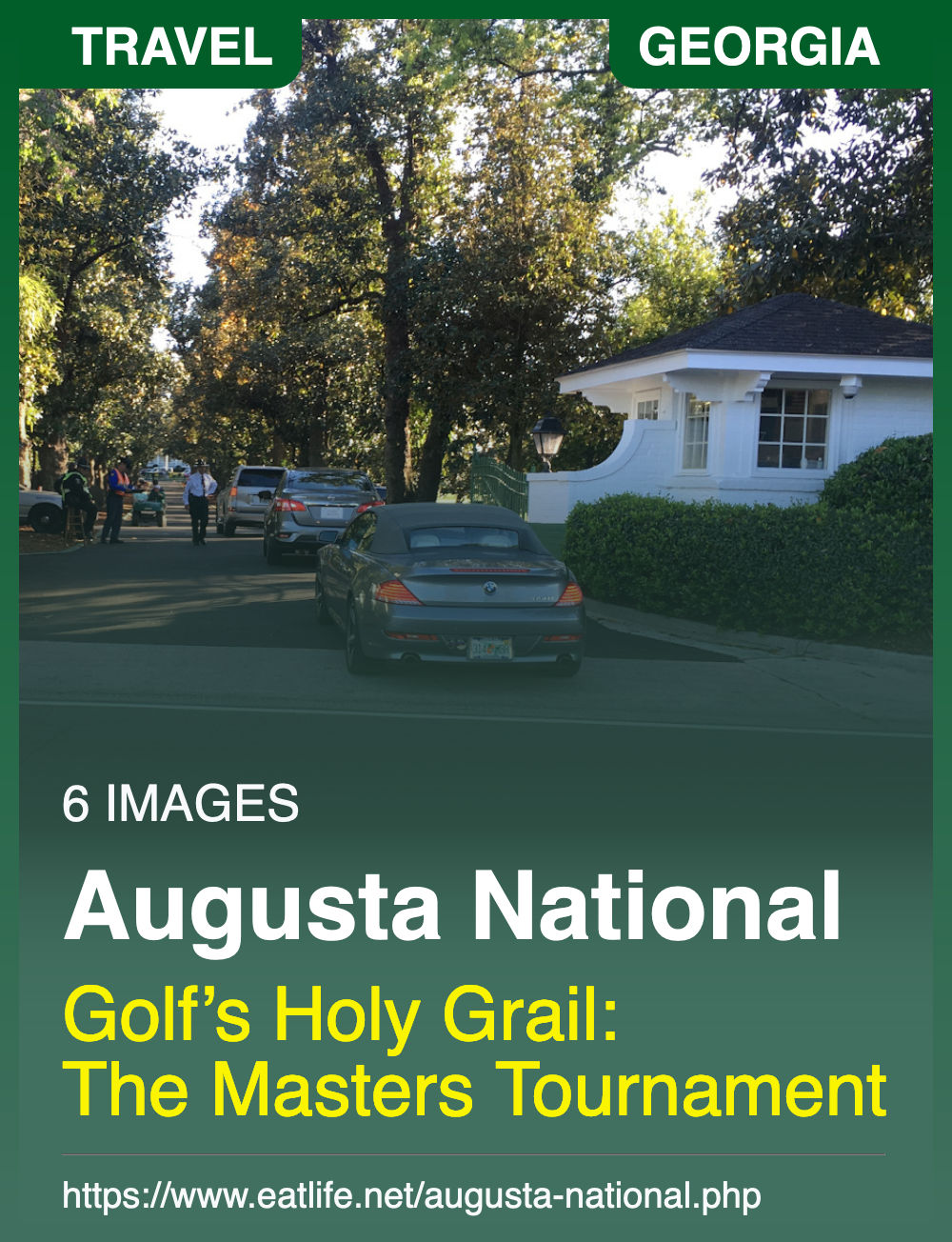Augusta National
The world's most famous golf course:
Situated in Augusta (Georgia) in a valley near the border with South Carolina, the US Masters venue is a very special club. It opened in December 1932, in the midst of the Great Depression, founded by millionaire Clifford Roberts and legendary golfer Bobby Jones.Bobby Jones:
After a career replete with titles, and still just 28, Jones retired from top competition one month after winning the then Grand Slam, at the peak of his career. The truth is that Jones wasn't a player like any other of his category: he only played 80 rounds a year, and dedicated just three months a year to traveling and playing in competitions.Clifford Roberts:
An investment banker who was able to recover from the Wall Street crash of 1929. In 1931, he discovered a property in Augusta for a project his friend Jones wanted to develop: a plot of land on the outskirts of the city. Said Jones: "It seems as though this place has been waiting here for years to be turned into a golf course." The financier bought the land and the Augusta National adventure began.The Land:
The land chosen for construction of Augusta National was a 148-hectare plot known as Fruitlands Nursery, perfect for the project as the vegetation had remained intact for years, and a beautiful avenue of magnolias led to the colonial house which today forms the main part of the clubhouse complex. The property was a magnolia plantation until 1857 when it was bought by Belgian baron Louis Mathieu Edouard Berckmans – a hobby horticulturist. Together with his son, he created a company one year later to import trees and plants from various countries.The Club:
A mutual friend of Roberts and Jones, Thomas Barret Jr., recommended the property for their great dream. Seeing the land, Jones decided it was perfect for the construction of a golf course. They decided it would be a members' course, named Augusta National. Construction began in 1931, it was opened in December 1932 for a limited number of members, and the official inauguration was held one month later.The Clubhouse:
Located on an elevated part of the land, and it is from here that Jones and Roberts visualised the course.The Course:
The designer of Augusta National was Alister MacKenzie, a Scot who gave up medicine to dedicate his time to his passion: golf. He designed a golf course with great similarities to Scottish layouts, though he was unable to enjoy his work for very long, as he died shortly after, knowing he had designed his best course.It's an emblematic example of design and strategy, where players are required to plan each shot perfectly. Each hole can be played in a different way, so players choose their route according to their ability. As far as the landscape is concerned, the course features a great profusion and variety of pine trees, many of which are more than 150 years old. Colorful azaleas are another main feature throughout the course, with more than 30 varieties; and there are several palm trees.
The Masters:
The Masters was launched, under another name, when Jones and Roberts decided to create a major event to be held every year in Georgia. Jones' idea was to invite all the world's top players to compete at the course. In 1934, Roberts wanted to call the tournament "The Masters" but Jones felt it was too pretentious, so it was called "The first annual Augusta National Invitational Tournament". Roberts was insistent, however, and used the press to change the name. In 1938, the name "Masters" was officially adopted.When the first Masters was held in 1934, the club had just 76 members. In that era, they were unable to pay the first winner his cheque for 1,500 dollars, so Horton Smith had to wait until 17 members contributed extra funds. The club only survived thanks to the efforts of its founders, Roberts and Jones.
The Jacket:
The garment that distinguishes Masters champions dates to 1937, the year Augusta national members began wearing a green jacket. The club committee urged members to buy the jacket and wear it during the Masters, so they could be easily identified. At first, members weren't particularly enthusiastic about using the jacket as it was too hot, but years later it was made with a lighter material.The tradition of giving a green jacket to the winner was initiated in 1949, when Sam Snead was victorious. The jacket, whose colour is known as "Masters Green", includes the Augusta National Golf Club logo on the top left pocket, also engraved on the buttons in bronze.
Traditionally, the winner takes his jacket home for a year, returning it the following year when he competes in the next tournament. It is kept in the club and is available for when the owner visits the course.
https://www.andaluciagolf.com/en/news/features/3373-augusta-national-el-campo-mas-famoso-del-mundo
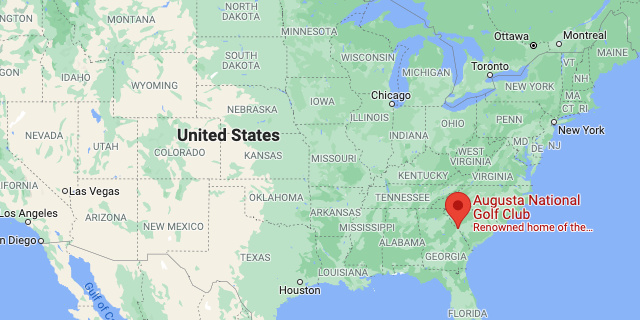
https://www.google.com/maps/place/Augusta+National+Golf+Club
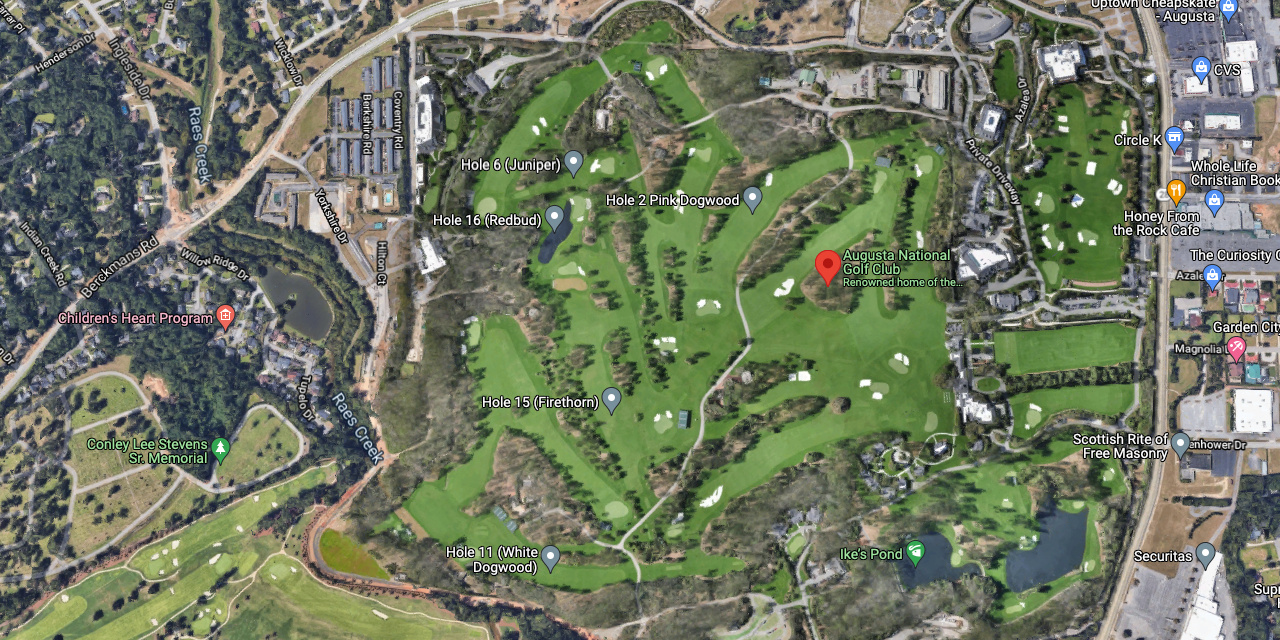
https://www.google.com/maps/place/Augusta+National+Golf+Club

https://www.google.com/maps/place/Augusta+National+Golf+Club
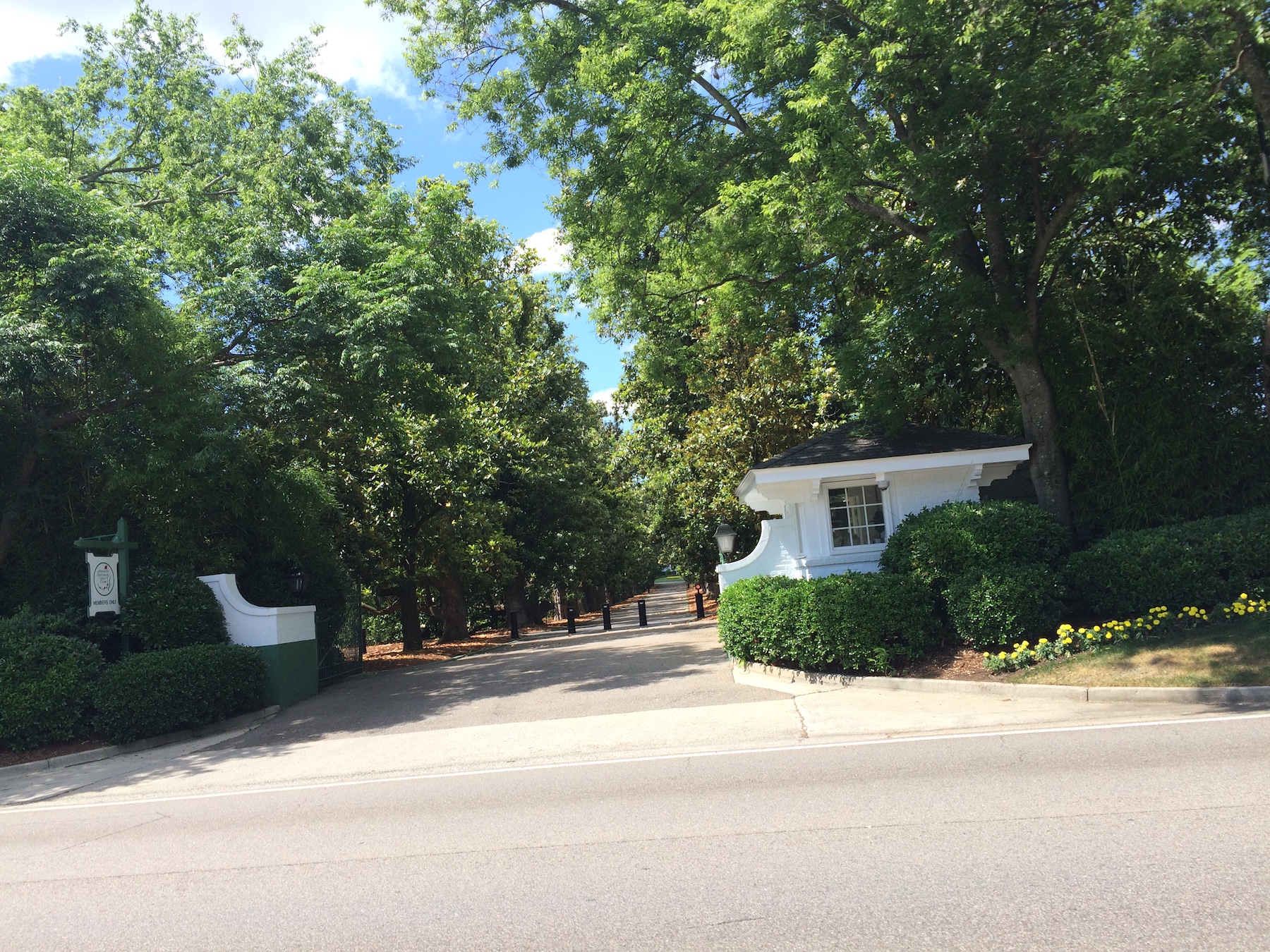
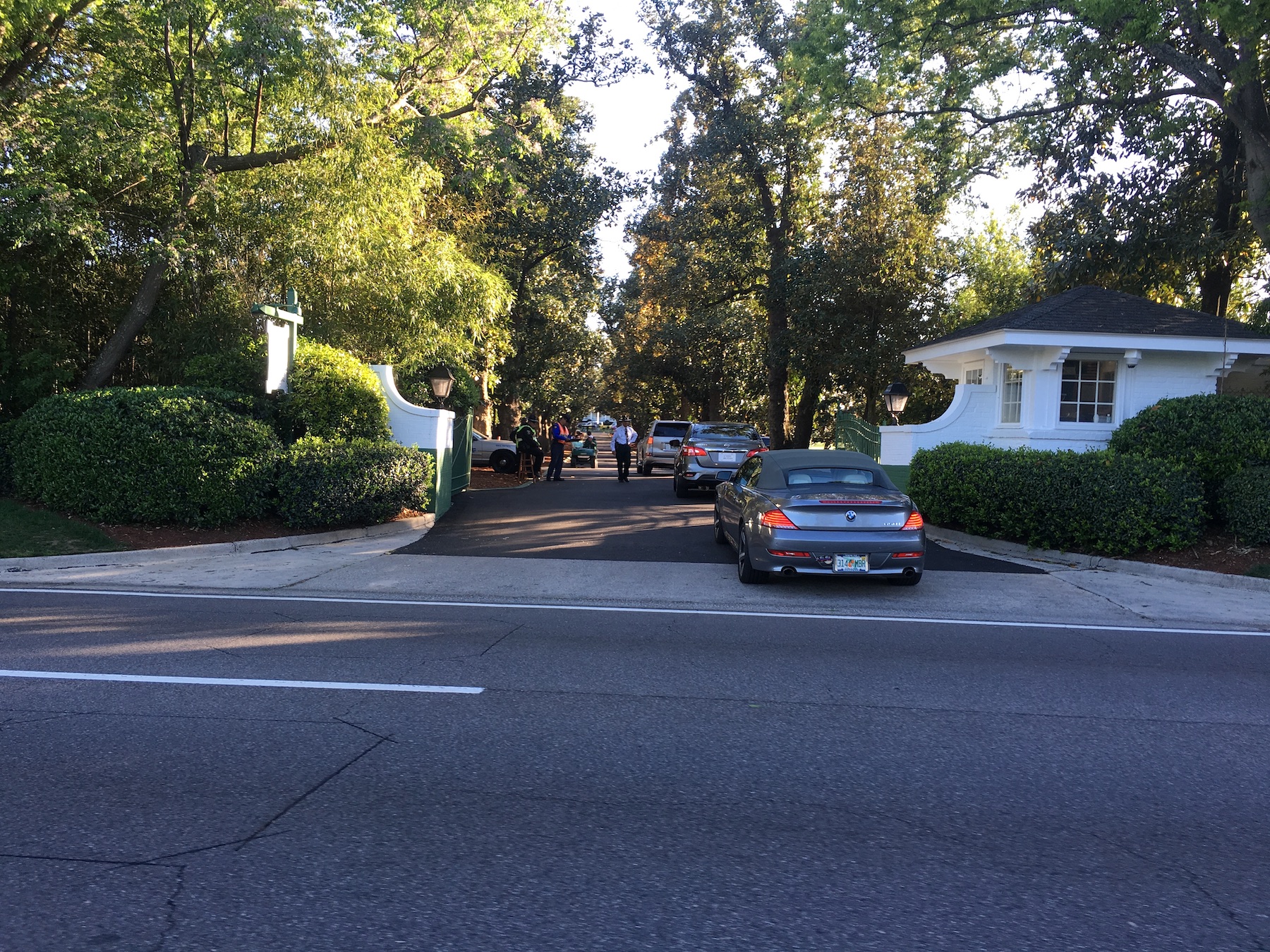

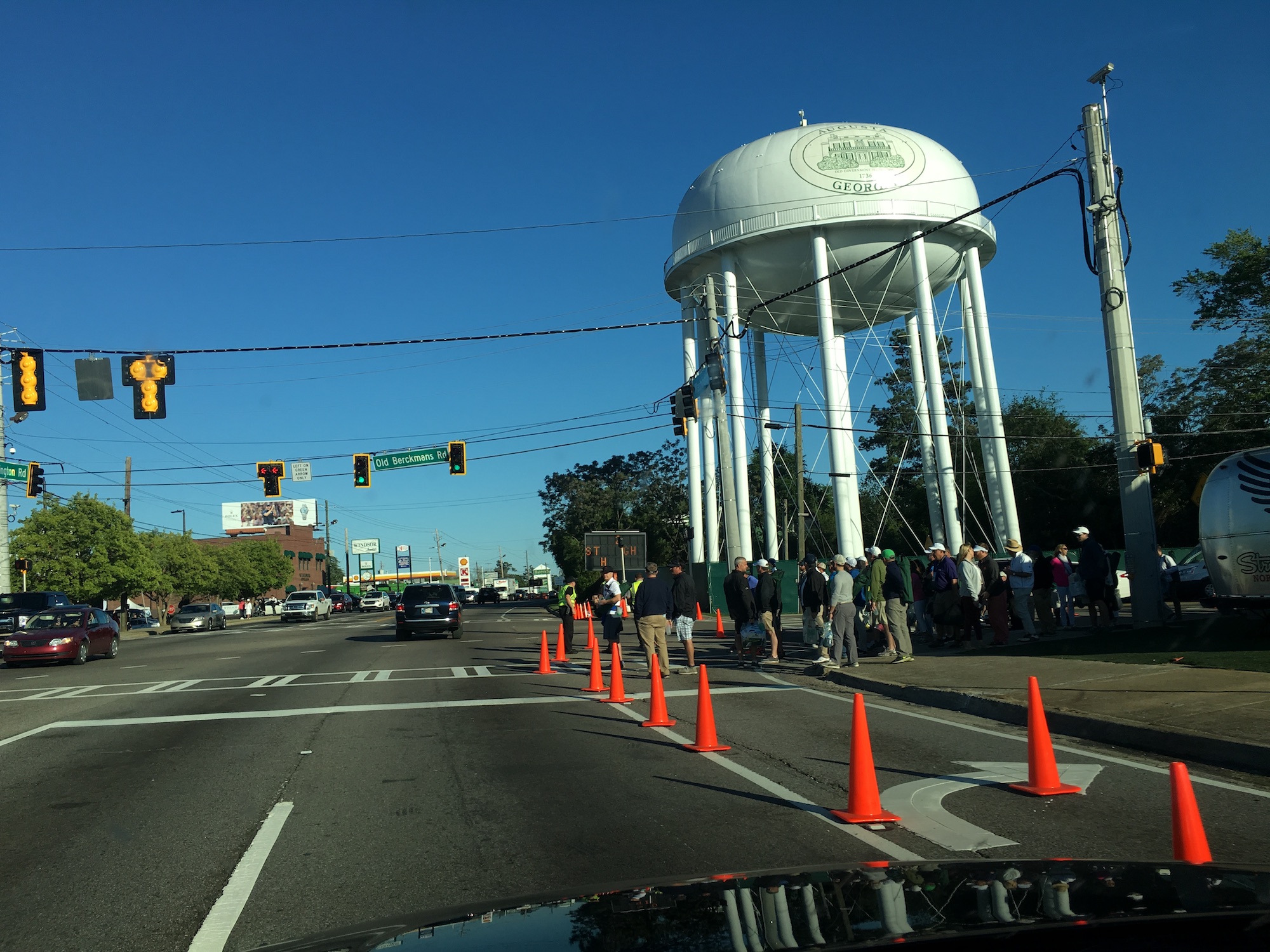
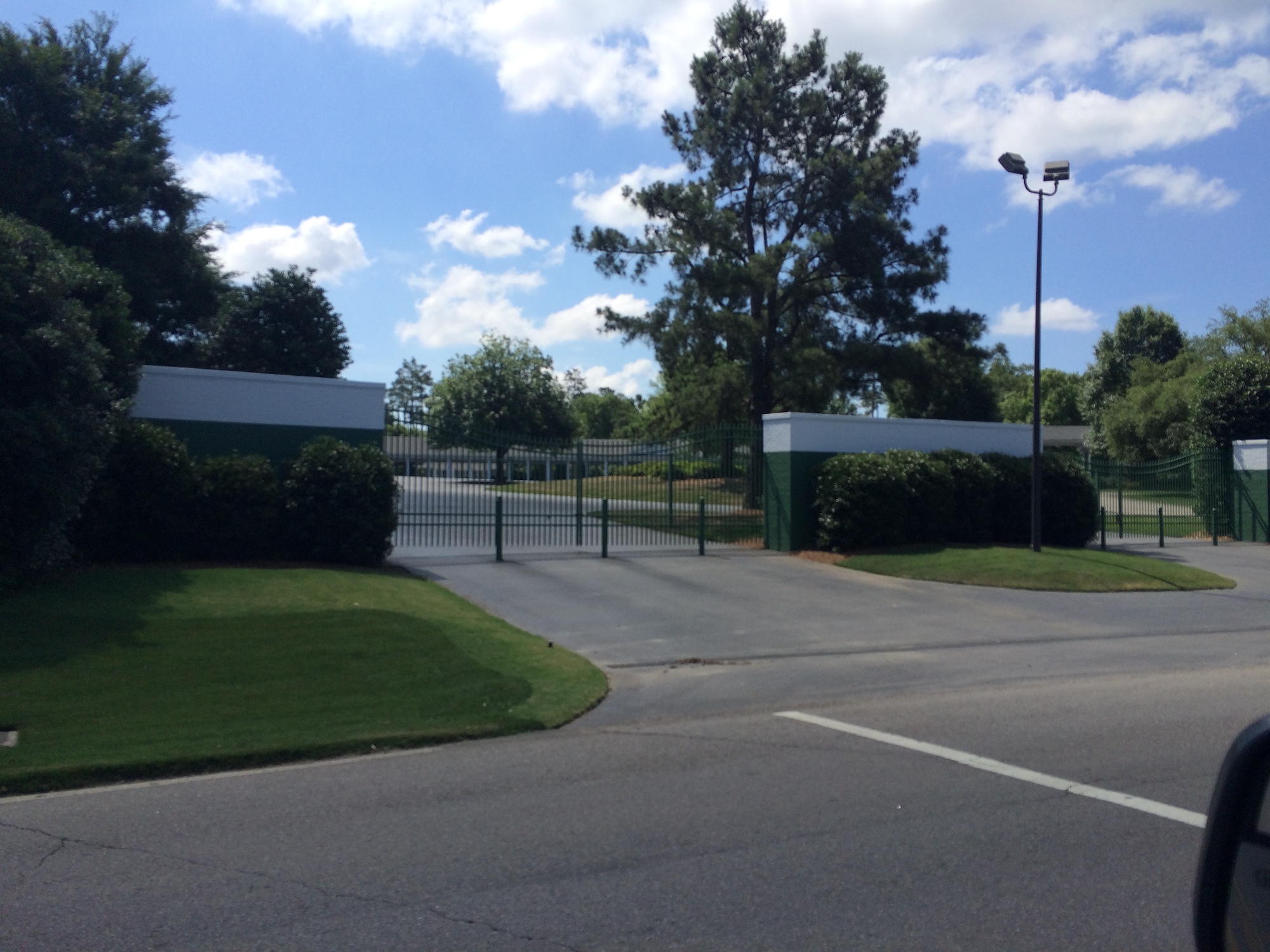
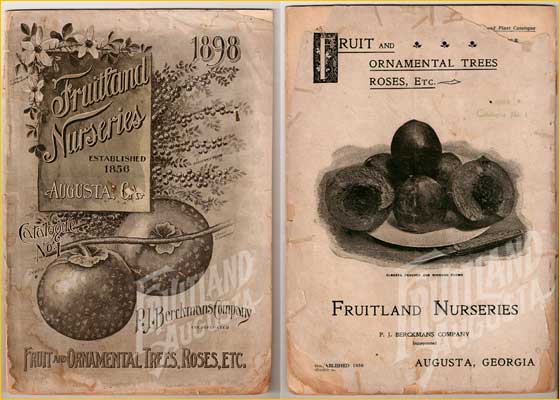
The history of Augusta is much more than golf; it was once home to "Fruitland Nurseries" - one of the most successful horticultural sites of its time in the South. Located on Washington road, approximately 3 miles northwest of downtown Augusta, Fruitland planted millions of peach trees in the 1800s and early 1900s and made Georgia famous for its sweet Georgia Peaches. In 1931, the land was eventually purchased and transformed into the most famous golf course in the world.
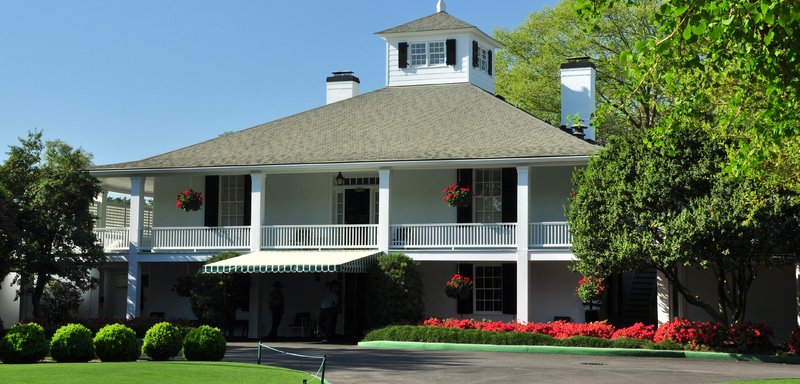
Redmond's Manor House:
The existing manor house, which had been built in 1857 by a horticulturalist and nurseryman named Dennis Redmond, was planned to be torn down.
It's quite small. Much of its apparent bulk comes from its porches, which are nine-and-a-half feet deep and run all the way around on both floors, and from large wings added later on each side. In 1931, the building had fourteen rooms, but most were cramped and dark, and there was no kitchen, no electricity, and no plumbing. The ground floor had been referred to by the builder as a "basement," and it looked like one. A consulting engineer, after making an inspection, concluded that most members "would probably be better satisfied in a modern building with all modern conveniences." Few disagreed.
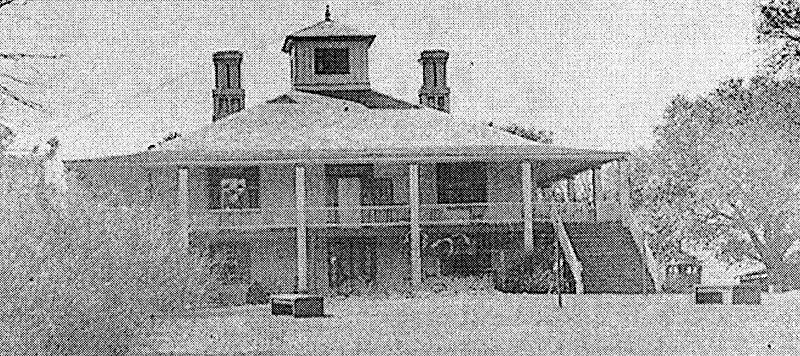
Fruitlands Nurseries:
Prosper Berckmans, a Belgian horticulturalist and landscape architect, had bought the property from Redmond in 1858 and turned it into Fruitlands Nurseries, which by 1931 had been out of business for a little more than a decade.
Augusta National Golf Club:
Clifford Roberts and Bobby Jones, the club's co-founders, hired Willis Irvin, a local architect, to draw plans for a new clubhouse.
Not everyone was eager to tear down the old manor house. Harry M. Atkinson, of Atlanta, who was part of Augusta National's tiny group of early members, wrote to Roberts in 1931 to say that he and his wife loved the building and believed it should be renovated rather than razed. "We both were greatly impressed with the avenue of magnolias leading up to the old Berckmans residence and the planting around the house," he wrote. "We think that all of that, including the house, ought to be preserved carefully," Atkinson continued. "It can be made a perfect gem, using the old house for a club house. You could not reproduce what is there for any amount of money."
Atkinson also said that he felt "a great many golf clubs" had been ruined by the construction of "club houses that are too elaborate and too luxurious"—an observation that may be even more apt today than it was then. In response to Atkinson, Roberts wrote that that the house would be hard to save but that, for financial reasons, nothing was likely to be done in a hurry.
The demolition plan would have proceeded if the club had had the money to carry it out. But Roberts and Jones were unable to sign up more than a handful of members, and therefore had to make do with their crumbling old manor house.
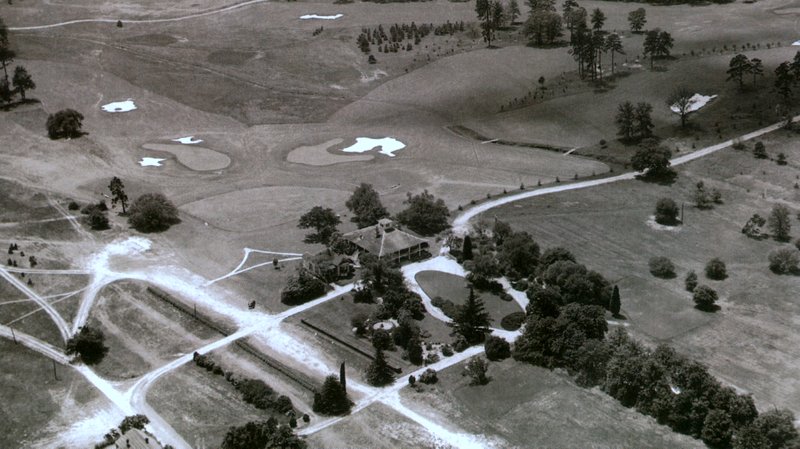
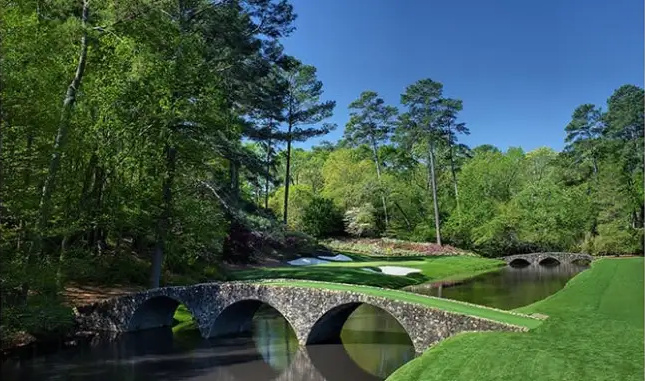
On April 2, 1958 the Augusta National Golf Club hosted the dedication ceremony for the Ben Hogan Bridge that carries the players over Rae's Creek on the twelfth hole. The bridge commemorates Hogan's 1953 tournament score of 274, the record low score at the time. The bridge is constructed of well-designed stone arches and at that time covered with natural grass, today it is covered with artificial turf.
The plaque at the entrance of the bridge reads:
This bridge dedicated April 2, 1958, to commemorate Ben Hogan's record score for four rounds of 274 in 1953. Made up of rounds of 70, 69, 66 and 69. This score will always stand as one of the very finest accomplishments in competitive golf and may even stand for all time as the record for The Masters tournament
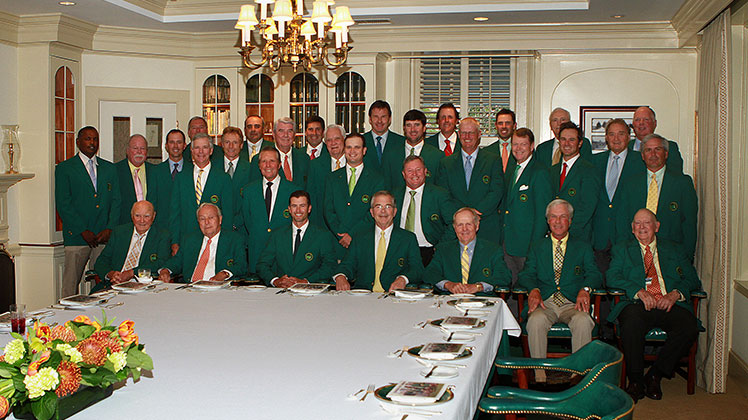
The Champions Dinner is one of so many time-honored traditions at the Masters. The ritual dates back to 1952 as Ben Hogan prepared to defend his first Masters title. He came up with the idea to host a dinner for all of the previous Masters winners. Nine of the 11 eligible invitees attended Hogan's dinner. To this day, tradition holds that the defending champion choose the menu, pay the check and receive a gold locket bearing the insignia of Augusta National. The champions gather at long, adjoining tables. Everyone wears his Green Jacket. The tone, though, tends to be more relaxed than formal–good-natured ribbing is common and no one has been immune to the banter. Sounds like a wonderful evening!
Defending Champion chooses the menu:
2014 Adam Scott: The meal started with an artichoke and arugula salad with grilled calamari, but the centrepiece of Adam Scott's Australian surf and turf menu at the Masters Champions Dinner Tuesday evening was Moreton Bay bugs – or Bay Lobster. It was something very local to Australia and flown in from Queensland. Australian Wagyu beef, some of the best beef in the world, was also served as steak. But the highlight of the menu was definitely the dessert. Adam Scott used his mother's Pavlova recipe, a fruit-topped meringue, as the final course of the night.
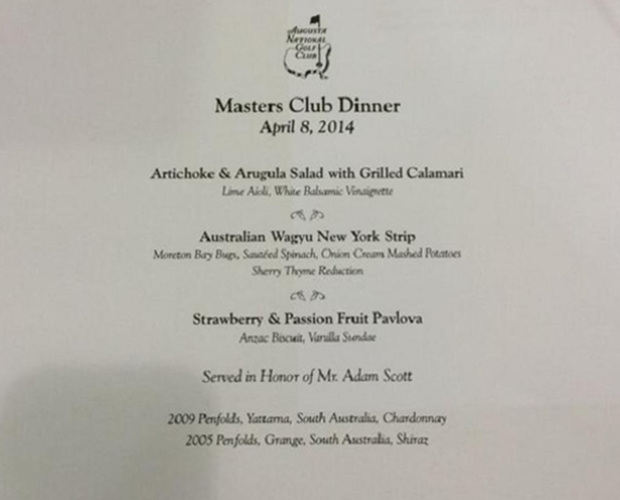
http://www.eighteenunderpar.com/blog/2014/04/09/adam-scott-masters-champions-dinner

The caddie uniform is a standard for Augusta National. That is just what the club's caddies wear. Up until 1983, participants in the Masters were required to use caddies provided by the exclusive golf club only.
And the reason for the jumpsuits? It derives from the 1930's when the club opened. The caddies were all mostly poor African American men, and the club founders and members wanted all the caddies to look "smart" and neat, and so they adopted the white jumpsuit.
The uniform has remained basically unchanged–the standard being the jumpsuit itself, a green hat and white sneakers. For the Masters, the pro golfer's name is emblazoned is across their backs, and all are numbered. The number "1" is given to the defending champion's caddie, and the other golfers get their caddie numbers from the order in which they register for the tournament.
https://thezebra.org/2018/04/07/why-do-the-caddies-wear-white-jumpsuits-at-the-masters

The Green Jacket is one of the most coveted trophies in all of sports. To get one, you must either win the Masters at Augusta National or be a member at Augusta National — one of the most exclusive golf clubs in the world. For three decades, Cincinnati-based Hamilton Tailoring Co. has made the traditional blazer. It uses wool fabric produced at the Victor Forstmann Inc. mill in the central Georgia town of Dublin. The company takes about a month to produce each blazer, which is fitted with custom brass buttons inscribed with the Augusta National logo. The owner's name is stitched on a label inside. The shade of its brilliant rye green is Pantone 342.
- The idea for the "Green Jacket" came from Bobby Jones. While attending a dinner at Royal Liverpool, Jones noticed how the captains wore red jackets. He brought this idea back to co-founder, Clifford Roberts, and they chose green for the color of the jackets that August National members would wear.
- In 1937, Club officials started the custom of Augusta National members wearing a green blazer during Masters week so patrons could identify reliable sources of information. The Club extended the tradition to Masters champions with Sam Snead's win in 1947, indicating the winners were to become honorary members of Augusta National.
- The first green jacket to be awarded to a winner of The Masters was in 1947 when Sam Snead won the tournament.
- The previous year's winner awards the green jacket to the winner of the Masters each year. If the winner is a returning champion from last year, the Augusta National president has the honor of presenting the returning champion with the green jacket.
- The first Masters champion to win the green jacket two years in a row was Jack Nicklaus in 1966. Nicklaus won The Masters six times during his career.
- The first international golfer to wear the green jacket was South African golfer Gary Player, who won The Masters in 1961.
- The green jacket that the Masters champion puts on at the ceremony is not the actual jacket he will keep. This jacket is owned by Augusta national Golf Club and must be returned 12 months later before the Masters.
- Winners are presented with a replica green jacket that they may keep to commemorate their win of the Masters tournament.
- Winners of the Masters must wear their green jacket whenever they play at Augusta National or visit.
- To make sure that the champion will have a jacket that fits, there are several green jackets in various sizes stored on site at Augusta National. As the tournament comes to a conclusion, employees begin to pull jackets in the sizes of the top players to have a correct sized green jacket ready for the winner.
https://www.locallifesc.com/10-interesting-facts-about-the-masters-green-jacket
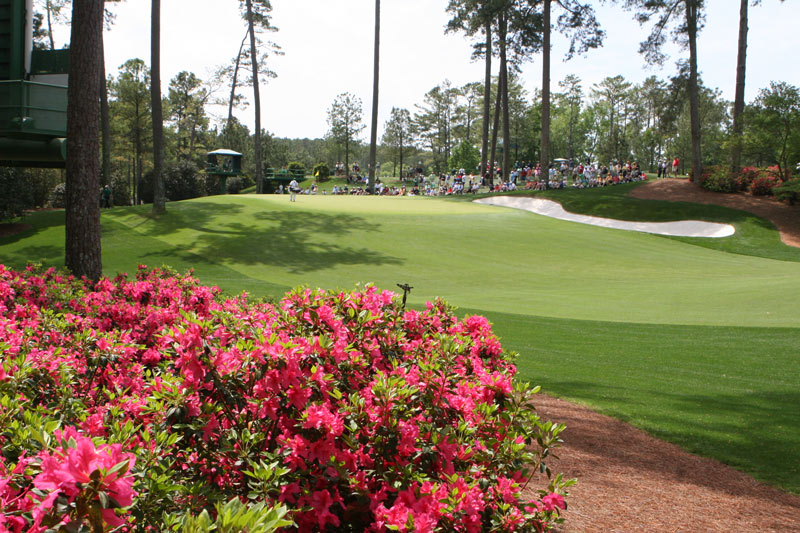
The famous wall-to-wall green color on display at Augusta National wouldn't be possible without improved perennial ryegrass cultivars, the first of which was released in 1967.
1967. The Beatles released "Sgt. Pepper's Lonely Hearts Club Band." Gas was 33 cents a gallon, and it cost a little more than a dollar to go to the movies. Most important, the first improved cultivar of the turfgrass species that graces the fairways, tees and roughs of Augusta National Golf Club was released.
Augusta, Ga., is in bermudagrass country — hot, humid summers and mild winters. Nevertheless, the timing of the Masters requires high-quality turf early in spring, and bermudagrass wouldn't yet be in pristine condition in northern Georgia. As such, a cool-season grass is needed.
In 1967, the New Jersey Agricultural Experiment Station released Manhattan perennial ryegrass as the first turf-type perennial ryegrass cultivar with high quality and good mowing characteristics. Since then, breeders have worked to develop hundreds of cultivars. The National Turfgrass Evaluation Program's most recent perennial ryegrass cultivar evaluation includes 114 entries from 29 companies. It's likely that a blend of cultivars is used across Augusta, but the quality of the surface is impeccable. The turf matches the jacket.
https://www.gcmonline.com/course/environment/news/augusta-national-grass
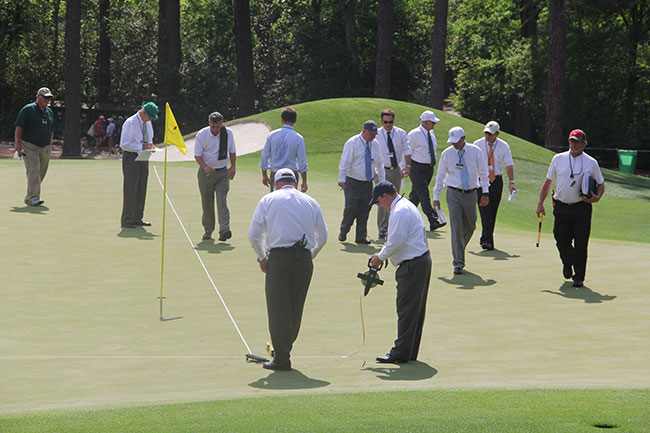
https://www.golfdom.com/2015-masters-photo-parade
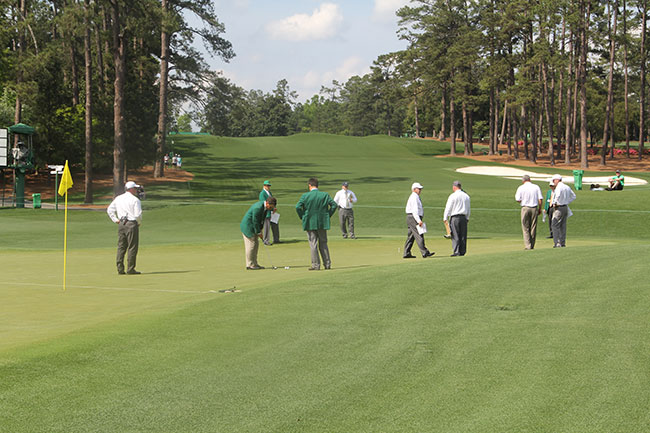
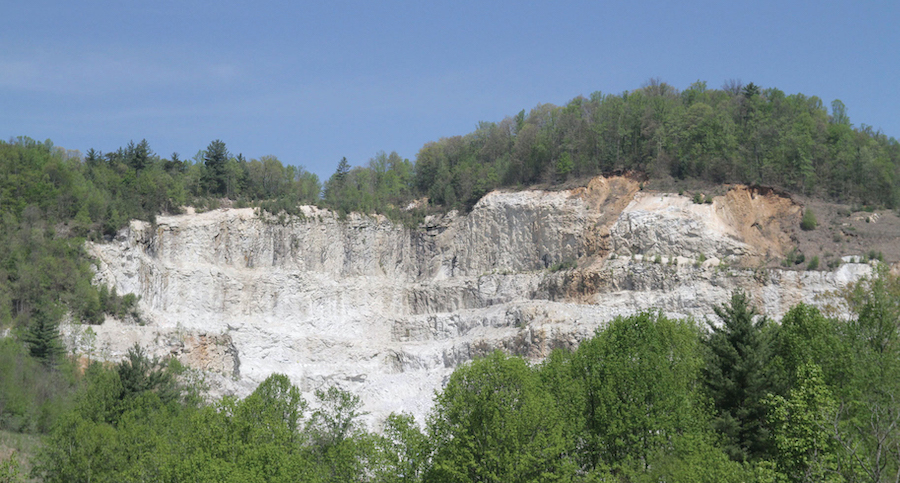
Rather than the usual drab, beige sand, Augusta's 44 sand bunkers are filled with heavenly white grains that CBS announcer Jim Nantz compared to bowls of sugar in an interview earlier this year with the Los Angeles Times. "They pop, they stand out," Nantz said in the interview. "Visually, they look different than everything else that you see. It just fits the rest of the motif, that it's fantasyland for the golfer. Everything appears to be perfect."
Those "perfect" grains of sand, in fact, have a direct local connection that makes Augusta seem far closer than four hours away from Mitchell County. The sand carries the industry name "SP55" and is a chalk-white trap filler made of granulated quartz. The rock in Spruce Pine is about 65-percent feldspar, 25-percent quartz and 8-10 percent mica and other trace items, Glover said.
"It's that 25-percent quartz," Glover said. "When you crush it, grind it and separate it, it gets broken down in the process. Because it is fractured and crushed, it has that rounded shape. It's an angular shape, more like broken glass. "It's pure and clear when you look at it under a microscope. It looks like uncut diamonds. It's those little facets that reflect light and make it appear to be so crystalline and white."
https://www.mitchellnews.com/local/augustas-unique-bunker-sand-originates-locally
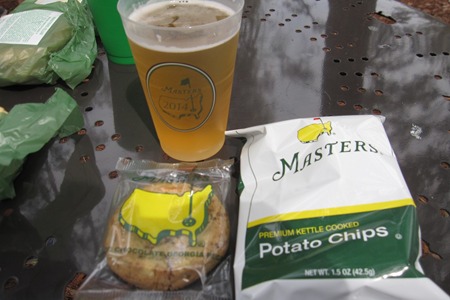
(2014) No square inch of the property is short of attention. Everyone's been told that there isn't a weed to be found, and that's basically true, but it's not just in the areas that the cameras see, but everywhere you'll step on the grounds. Then there's the rest of the patron's experience on the grounds. The restrooms would fit in just fine in your average sit-down restaurant.
The concessions are set up cafeteria style so that you walk through a line of food and drink and pay at the end... and I never waited more than about 10 seconds to pay. All of these structures are permanent construction. That is, there are no "tents" at The Masters.
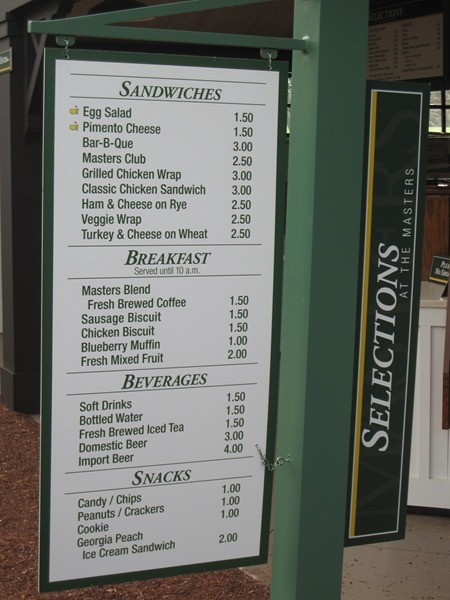
http://www.thegolfbucketlist.com/the-masters.html
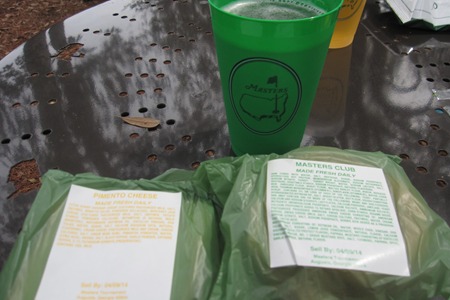

You have a better chance of admittance into Harvard Law School then getting your hands on a ticket to the world's most celebrated and prestigious professional golf tournament of the year. It's the one where the world famous Masters' Pimento Cheese Sandwich is only $1.50. All the food is wrapped in a light green cellophane wrapper, which I was told is done to keep the cohesiveness of the green color throughout the coverage for the TV broadcast.
The cheese sandwich is served cold at the Masters, though I much prefer my pimento cheese melted and oozing from golden crispy bread. Just butter the outsides of the bread and grill just like you would a grilled cheese.
Ingredients:
- 8 ounces shredded cheddar cheese
- 4 ounces shredded pepper jack cheese
- 2 tablespoons full fat cream cheese
- 1/2 cup mayonnaise
- 1/2 cup pimentos, drained and diced
- 1 small shallot, minced
- pinch of paprika
- 8 slices white bread
Instructions:
- Mix the cheddar, pepper jack, cream cheese, mayonnaise together in a medium bowl until well blended.
- Add the chopped pimentos, minced shallot, and pinch of paprika and mix.
- Spread the pimento cheese mixture onto 4 of the bread slices and top with remaining bread.
https://beautyandthebeets.com/the-masters-pimento-cheese-sandwich

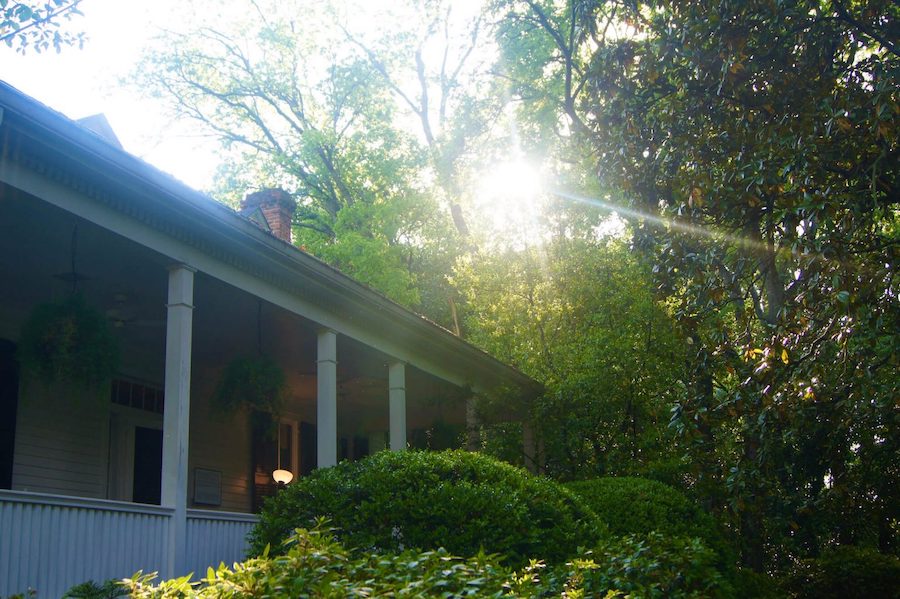
The Masters has long been referred to as "the toughest ticket in sports" and with very good reason. Unlike most sporting events, there is never an on-sale where you can simply pull out a credit card and purchase a face value ticket. But there are roughly 40,000 spectators on the golf course during every day of the Masters, so how exactly did they secure their tickets? Our goal here is to take you behind the curtain and share with you all the ways that spectators obtain access to the most coveted golf tournament in the world. Here is a quick overview of who is attending the tournament:
- Members & their guests: Each member receives a Members Badge that allows them to attend the entire tournament. You will recognize members by their distinctive green jackets. Each member has an allotment of Member Guest badges that confer the same privileges.
- Patrons: For the first time ever, in 1966, the Masters officially sold out of tickets. It became more and more difficult to obtain tickets and finally by 1972 Augusta National created a waiting list. Those who had tickets the previous year were allowed to continue purchasing them, and everyone else had to wait for someone ahead of them on the waiting list to drop out. Demand was so strong that by 1978 even the waiting list was closed. The waiting list opened briefly in 2000, but by and large, most badges are owned by patrons who have had them since the 1970's. Yes, they are getting older now. When a patron dies, the badge may be passed on to their surviving spouse, but no one else. Augusta National is famous for monitoring the national obituary pages to catch whenever one of their patrons passes on so they can maintain an accurate list.
There are a few other ways to become a patron. Volunteers at the tournament are awarded patron badges. - Juniors: To make the game more accessible to younger golf fans, in 2008 Augusta National began allowing free entry to juniors aged 8 to 16. The bottom line is that juniors are welcome to attend the Masters for free, but they must attend with the patron that owns the accompanying badge. No one else may escort them. Patrons are limited to hosting just one junior per day.
- Lottery Winners: On Tuesday, April 5, 1994, it was reported that approximately 80,000 people showed up at the gate to purchase a ticket. Augusta National responded quickly the following May by announcing a new lottery system for practice round badges beginning in 1995. That first year, the club reported receiving 250,000 applications and they awarded practice round tickets to about 50,000 lucky lottery winners. That same lottery system has been in place for practice rounds ever since.
- PGA Golf Pros: Every PGA of America member is allotted one ticket for every round of the Masters each year. PGA professionals show up at the gate and present their credentials for entry. For many, it is the greatest reward of their chosen profession. Members of the Golf Course Superintendents Association of America get a badge as well.
- Secondary Market: Stubhub is perhaps the most used site for Masters tickets, and they sell hundreds of badges per tournament day. They tack on fees. Do not ever buy Masters badges off eBay. Augusta National tracks tickets they see on ebay, and have been known to regularly invalidate any badges they see pictured there.
https://www.mybucketlistevents.com/masters-tickets-toughest-ticket-sports
They are not fans. They are not a crowd or even a gallery. They are patrons. You'll hear it often during the CBS broadcast. Also, while on the grounds, patrons are told not to run. Walking only.
Also, watch any pro tournament and behind the golfers you'll see a cadre of sign-bearers, reporters, photographers, broadcast personnel and cameramen. Not at Augusta. Between the ropes, competitors, caddies and rules officials only.
Patrons who show up early and place their chairs and leave will find their chairs waiting for them when they return. Try that at Bethpage Black outside New York.
More than 40 years ago, during one tense moment, CBS commentator Jack Whitaker used the term "mob" to describe the scene around a green. The Masters leadership let his bosses know that he wouldn't be invited back, and he wasn't.
Of course, there were Gary McCord's famous lines about "bikini waxes" and "body bags." It's been 17 years. He hasn't been back, either.
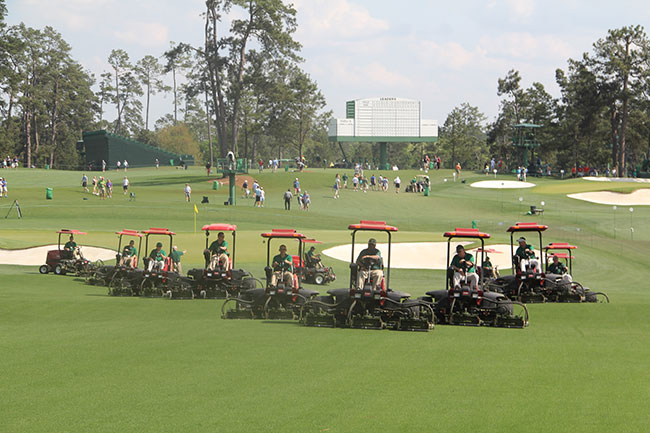

The Tennis Balls:
Should the guy in the back spot a hydraulic leak on a machine in front of him, he grabs that tennis ball and throws it in front of the operator as a way of alerting him immediately.
https://www.golfdom.com/2015-masters-photo-parade
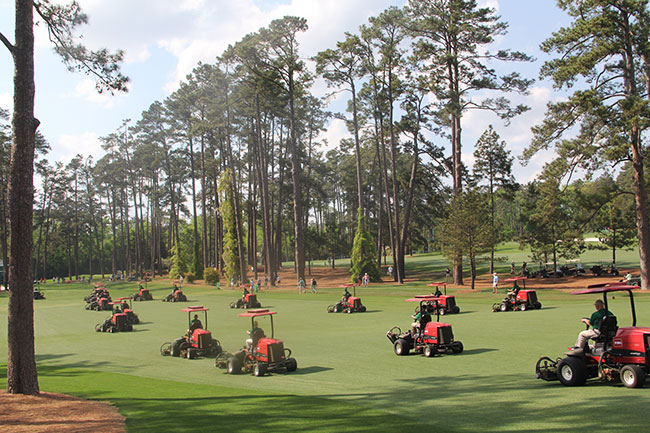
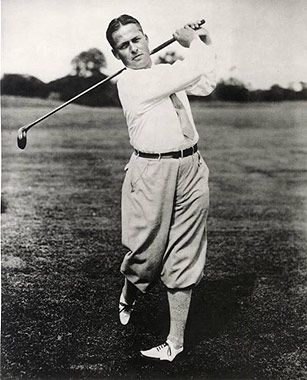
Donald Ross had agreed to design a Georgia golf course for Bobby Jones. But then Bobby Jones lost a match. And that changed everything. During the 1929 U.S. Amateur, the great Bobby Jones inexplicably lost his first round match at Pebble Beach to an obscure player by the name of Johnny Goodman.
By that time, Jones had dreamed of an idyllic golf club somewhere near his home in Atlanta and apparently had a handshake agreement with Ross that the Scot would design the course whenever Jones was ready to embark on the project.
But when Jones lost in the first round at Pebble Beach, he had a week to kill – travel arrangements not being as fluid as they are today. He spent considerable time playing a new course on the Monterey Peninsula and getting to know its architect. Jones was so smitten by what he found in Cypress Point and Alister MacKenzie that he left California knowing MacKenzie, the British physician-turned-golf architect, would be his designer —not Ross.
After losing his chance to design Augusta National, Donald Ross rededicated himself to his own crown jewel, Pinehurst No. 2.
https://www.pinehurst.com/about/tale-augusta-national-donald-ross
Watch the Masters on television and it looks relatively flat. It isn't. One of the reasons the course is so tricky is that players have to hit off uneven lies to undulating greens, and you have to be here to understand just how uneven and undulating the course is. The 10th fairway could be used as a ski slope. The second is straight downhill. The 14th and 17th require drives straight uphill. One of the reasons Bryson DeChambeau has struggled at the Masters is that he believes in calculations, but uneven footing and swirling winds make science worthless. You have to feel it.
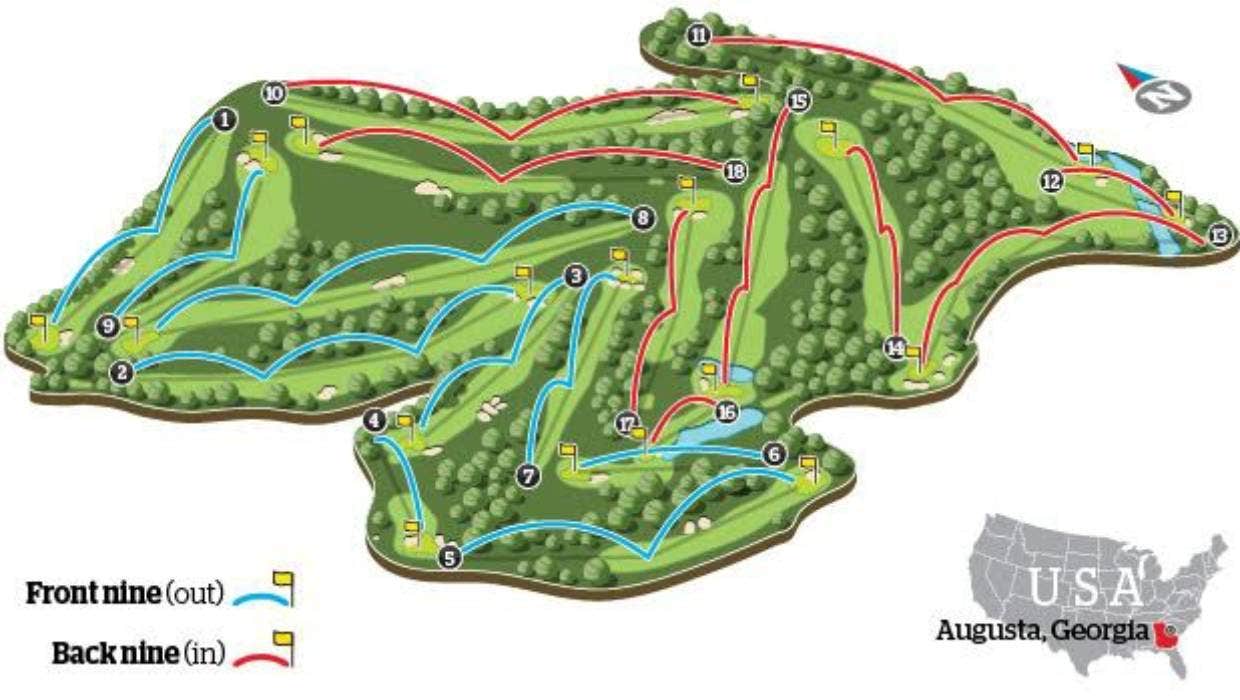
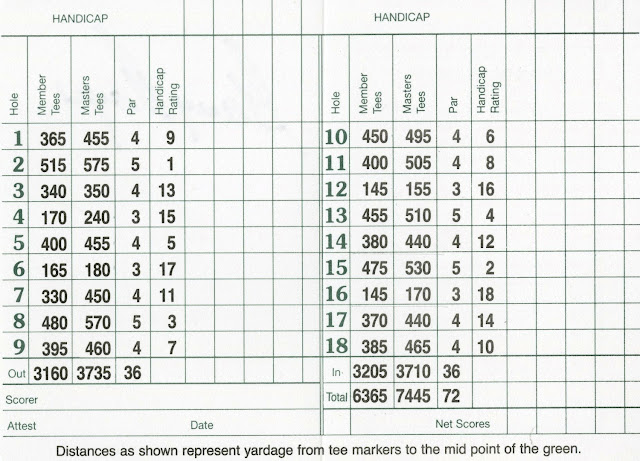
Augusta National Golf Club is one of the most exclusive golf clubs on the planet, a place that cares mightily about its reputation and about appearances. But the Augusta National scorecard, on the other hand, is about as plain-Jane as it gets: simple dark text on a white background.
Nothing fancy, no wasted words or excess information, no special graphics. Just the facts: the Augusta National logo on the scorecard's front cover, hole names on the back cover, and inside the holes, yardages from both the members' tees and Masters tees, pars and handicap ratings.
Most American golf courses list their holes across, so golfers write their scores in a horizontal row. The Augusta National scorecard, however, shows holes listed vertically, in columns, which is the traditional British way of arranging a golf scorecard.
Did you notice there is something missing from the info on the scorecard? There are no USGA Course Ratings or USGA Slope ratings. That's because Augusta National has never asked the USGA to rate the course (Augusta members have their own handicap system used only at the club). However, a couple times in history a band of USGA raters has gathered at the course during Masters Tournament week and surreptitiously taken measurements and made calculations. The result is an estimate of Augusta National's ratings: The unofficial Course Rating is 78.1, and the unofficial Slope Rating is 137.
https://www.golfcompendium.com/2019/03/augusta-national-scorecard.html
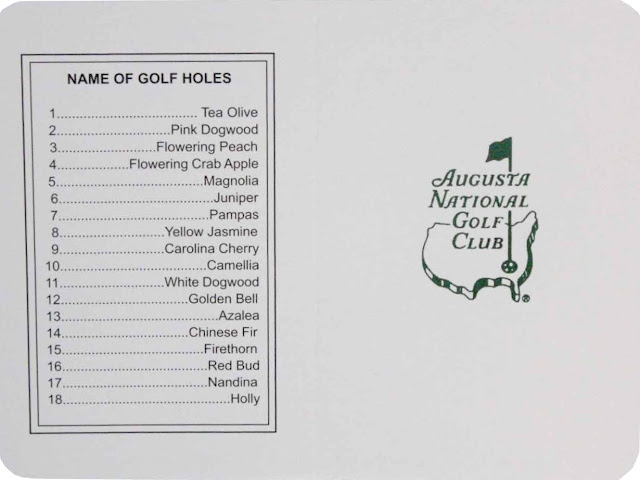
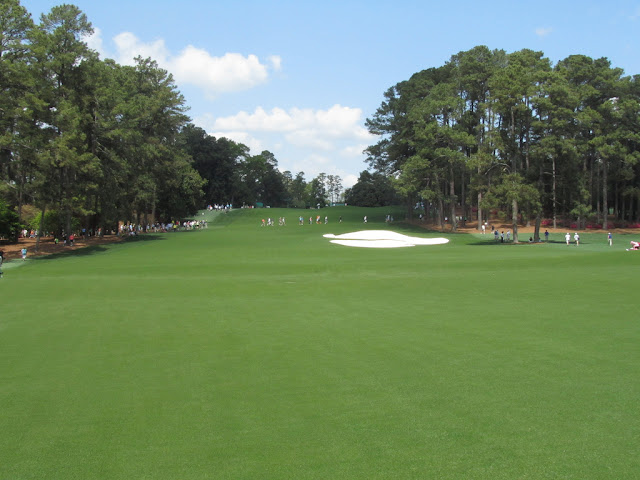
The first hole at Augusta National Golf Club begins right next to the clubhouse. The drive is uphill and there's a slight doghill to the right. Trees on the left will catch drives that stray too far. The approach is to an undulating green.
When Augusta National first opened, this was the 10th hole. The nines were flipped in 1935, making Tea Olive the No. 1 hole.
Tea olive (scientific name osmanthus fragrans) is an evegreen shrub that can be shaped into a small tree. As the scientific name makes clear, its small white flowers, which bloom from December through March, are highly fragrant.
Through the 2018 Masters, the No. 1 hole has played to an all-time average of 4.24 strokes. That ranks it as the sixth-toughest hole on the course during tournament play.
Easiest Year:
The easiest the first hole has ever played for a single tournament is 4.0082 strokes during the 1974 Masters.
Toughest Year:
The highest stroke average it's had is 4.47 during the 2007 Masters.
Highest score ever:
The worst score ever on the first hole is 9, a quintuple bogey, and it's happened only once. Ernie Els is the golfer who did it, during the 2016 Masters.
Lowest score ever:
An eagle 2 is the best score ever recorded on the first hole. Five golfers have holed-out the opening hole for that score.
Best tournament score:
No player has ever birdied the first hole all four rounds. But five have birdied three out of four.
Worst tournament score:
The highest cumulative score on No. 1 during a singles Masters is 6-over-par 22. It has happened by three different players.
https://www.golfcompendium.com/2019/03/augusta-national-1st-hole.html
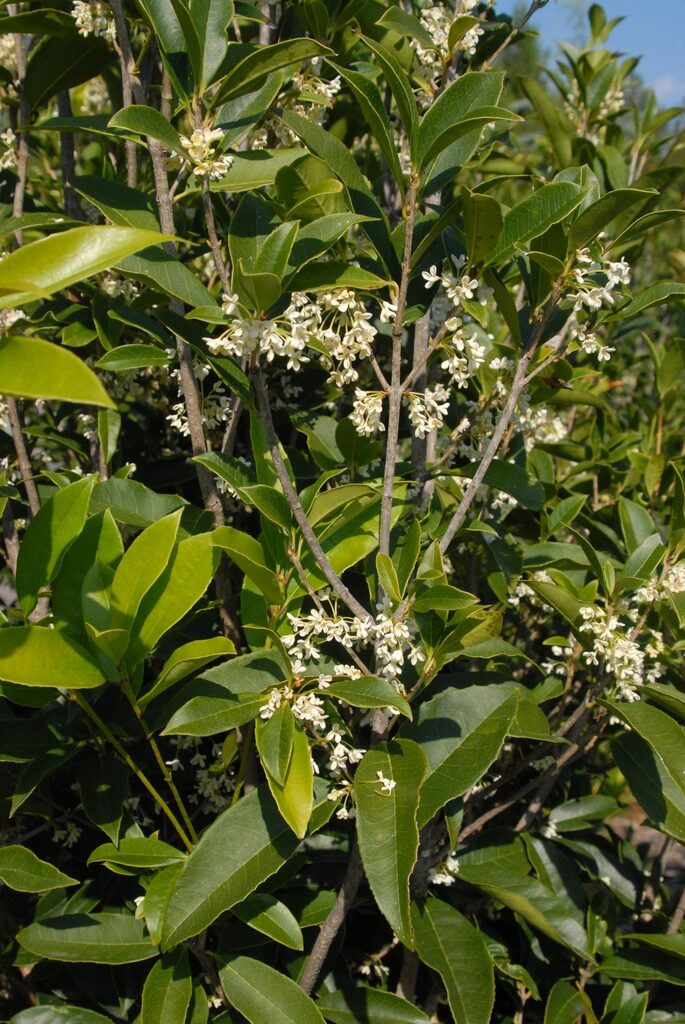
Also known by scientific name as Osmanthus. Tea olive is a dense, evergreen shrub that is better known for its fragrant fall flowers. The leaves of tea olives resemble holly leaves, often being confused with hollies, giving it the other common name of false holly. It is easy to determine the difference between hollies and tea olives. Tea olives will have opposite leaf arrangements down the stem while hollies have alternate leaf arrangements. The height of Osmanthus species can vary from 6 to 30 feet tall depending on the cultivar. The width of the shrub is usually similar in size to the height. Growth rate for tea olives is slow to moderate, however growth rate will be greatly influenced by soil quality, water and nutrient availability. The best feature tea olives have is their sweet, intensely fragrant flowers. The fragrance of the flowers is often compared to the scent of peaches, jasmine or orange blossoms. They flower in the fall.
https://wayne.ces.ncsu.edu/2021/01/plant-spotlight-tea-olive
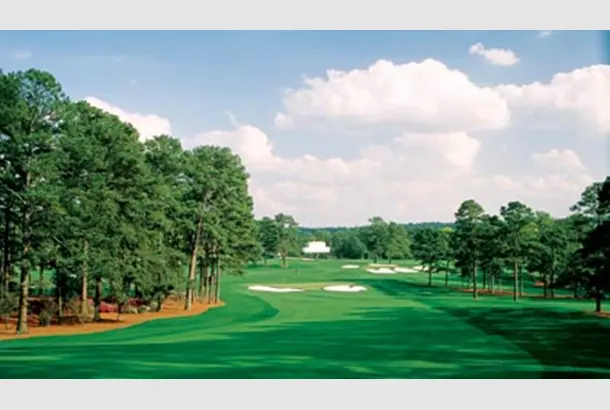
Another hole where it's very hard to fly the fairway bunker in the way that players used to.
It must be 330 yards out there and most of the time you're looking at short of the sand, leaving a 3-wood into the green. Many pins are on the top shelf to the left and a lot of guys miss to the right. Miss it left and you don't have a chip and if you're long, it's very difficult to get up and down. Anything landing front middle will funnel round to the Sunday pin on the right corner.
Billy Foster Remembers:
We played with Tiger a couple of years ago and he took driver and hit a foot behind the ball. And I mean a foot – you could see the divot. The ball bounced 50 yards away and disappeared into the crowd on the left. An absolute horror shot. He then hit a 3-iron deep into the trees on the right. I think he took a penalty drop and hit another long iron on to the green, about 60 feet away, and holed the putt for a par. That memory will stick with me for a long time.
Peter Alliss:
When you look at the shape of the hole the angle makes the green look a lot narrower than it is. It's 60 yards wide but only looks about 15 paces wide from the fairway. It sounds ridiculous but the green's contours mean you can play a poor shot and end up near the hole or play a very good shot and still face a monster putt. Players try to ‘sling' it around the corner and get a run down the hill.
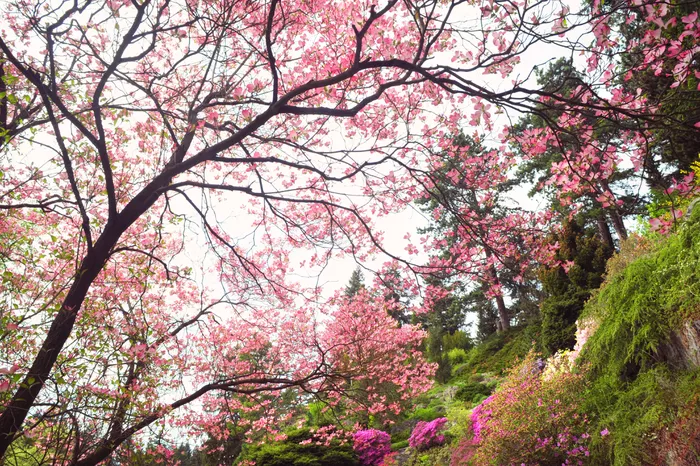
The pink dogwood is notable for the many pastel flowers that it produces each spring for about two to four weeks. Like other dogwoods, the pink varieties are very good landscape trees for the rest of the year, too, with green foliage that turns purplish in fall, and reddish berries that draw butterflies and birds. At a growth rate of about 1 foot per year, the pink dogwood tree can quickly become a robust addition to the landscape.
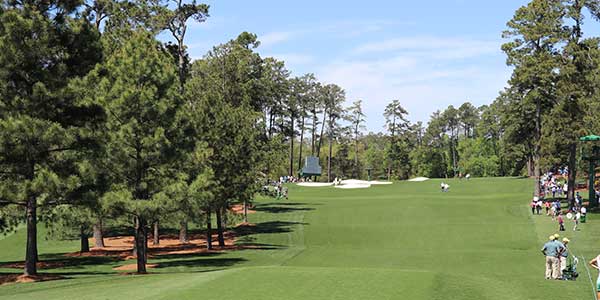
A classic par 4 and the shortest at Augusta by 90 yards. Standing on the tee, four bunkers are situated on the left of the fairway meaning the majority of players will take a shorter club to lay up before the traps and hit an awkward wedge shot into the green which is where further danger lies.
Miss the green to the left and there lies the fifth and final bunker of the hole but with the dancefloor sloping heavily from right-to-left, the players will be hoping to use the slope and roll the ball towards the hole depending on the pin position. On the Sunday, the pin is usually in an extremely difficult position meaning pinpoint accuracy is required to make a birdie. As history shows it is much better to go long rather than short as the ball will fall back down the slope to leave a 15-20 yard pitch shot onto the green.
Quick facts about the 3rd:
- With a historical average of 4.08 the 3rd is the 14th hardest hole at Augusta
- It has been changed less than any other hole on the course
- Tiger Woods played this hole to -1 in 2019
In 2003, veteran Jeff Maggert was in contention until he arrived at the third. After finding the fairway bunker, his second shot was up against the lip. The ball rebounded back and hit him which resulted in a two-shot penalty to end his hopes of the green jacket.
https://www.yourgolftravel.com/19th-hole/guide-to-augusta-national
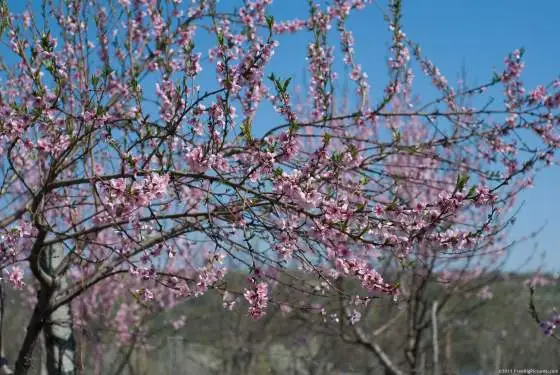
The peach is native to China, and is cultivated worldwide. Interestingly, peaches and nectarines are the same species. The tree and fruit have great cultural significance in many parts of Asia. Georgia is known as The Peach State. The Peach also is the state flower of Delaware; Peach Pie is Delaware's state dessert.
https://golfblogger.com/the-trees-and-flowers-of-augusta-national
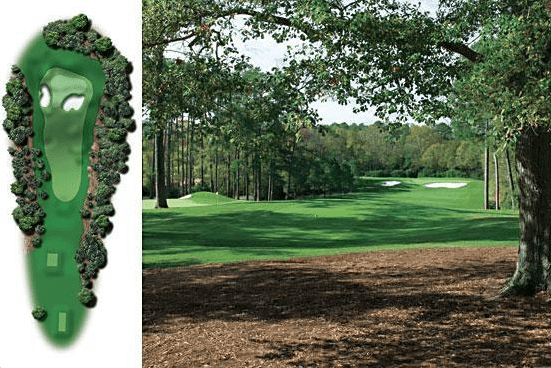
The first of the par 3 holes at Augusta and it's one of the toughest holes on the course. With a historical stroke average of 3.24, it's a stout wee hole. Two large bunkers are on duty to protect the narrow opening to the green. A back right tee position requires a soft landing long iron with the greatest of precision.
In 1983, during 'the best golf of my life' and on his way to his second green jacket, Seve Ballesteros hit a 205 yard 2-iron to tap-in range on this stout par 3. The Spanish artist of golf also chipped in for par on the final hole just to put a cherry on the top of his victory.
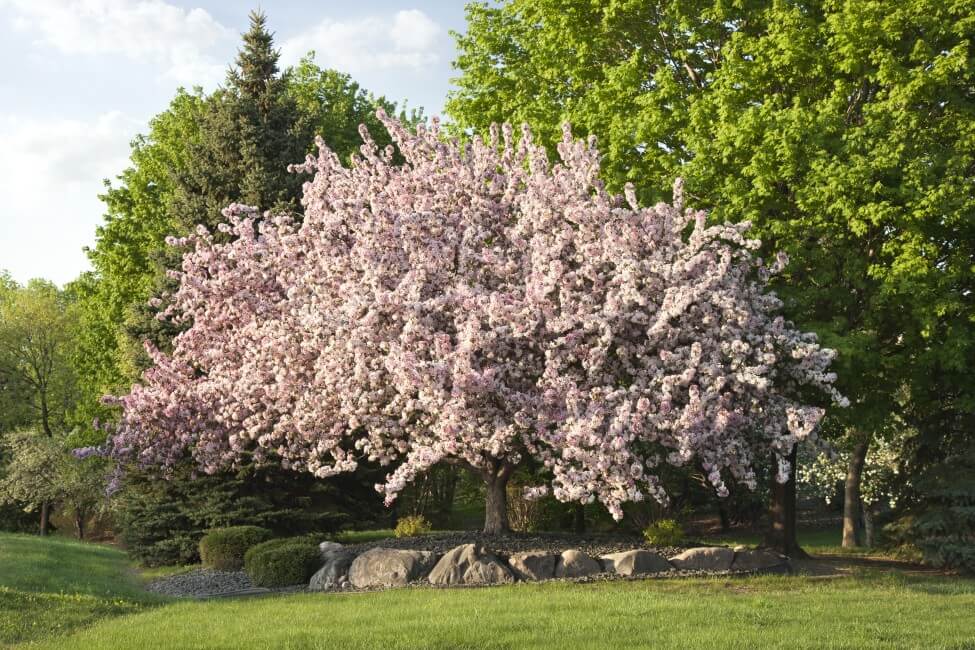
Crabapple trees are native to the temperate regions of North America, Europe, and Asia. Generally, these compact ornamental trees showcase their beautiful blossoms in spring. Bloom time depends on the variety, elevation, and weather conditions. Some crabapple tree varieties (mostly single-flowered varieties) flower relatively earlier than the others. Some types start flowering mid-season, while others bloom in late spring.
The flowering of crabapple blossoms lasts from 1 to 2 weeks.
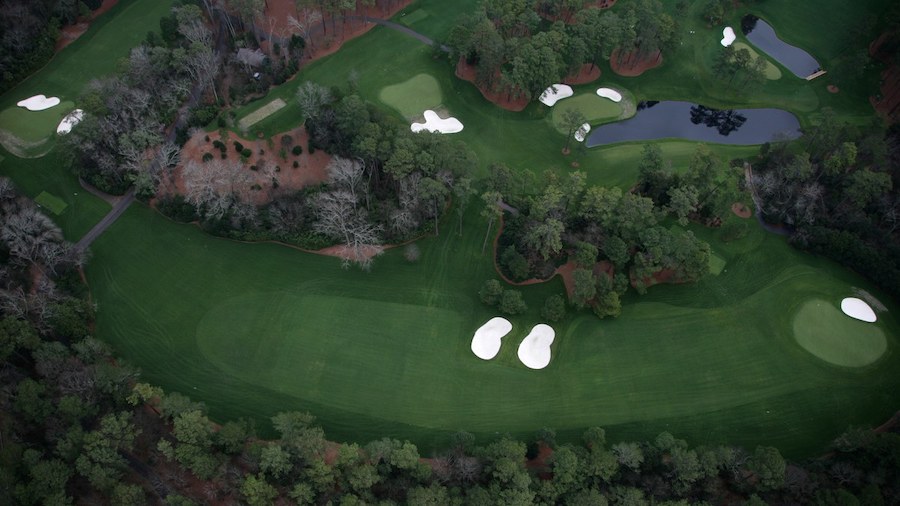
This hole is tucked away in a corner of the course that only the diehard patrons venture out to. Observing a great golf hole being played by the game's best rewards their walk. A pair of large bunkers on the left can snare errant tee shots and they are so deep it is difficult to reach the green from them. As such, smart heads play to the right, to the top of the hill, leaving a 60- or 7-iron in for most. The approach is almost always played toward the middle of the green as there are runoffs on nearly all sides. Still, sometimes players go for the flagstick, as evidenced by Jack Nicklaus making a pair of eagle 2's here in 1995. This hole ranks as the seventh most difficult over the last 10 years.
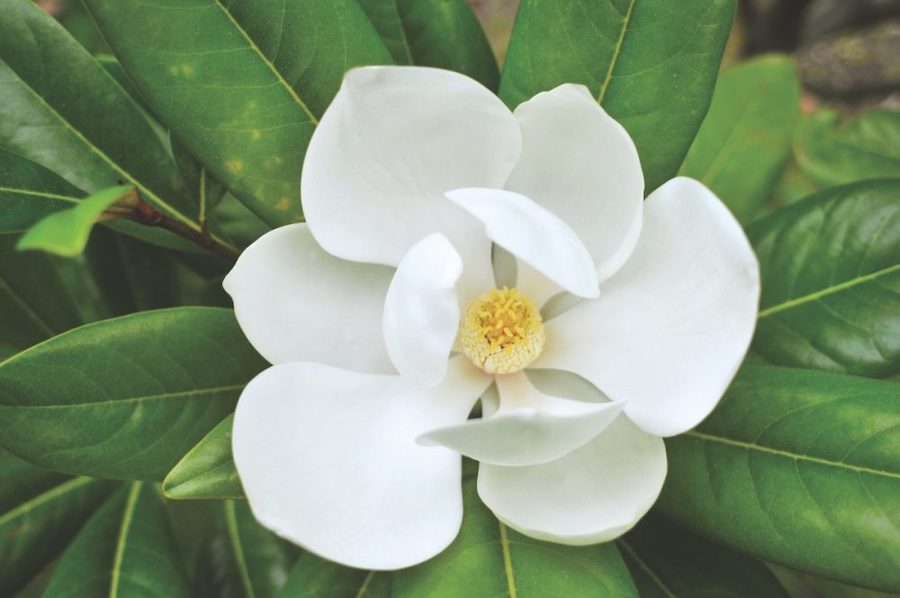
No matter where you live, I imagine that you have seen or experienced the majesty of the southern magnolia, Magnolia grandiflora. Its stately form, glossy leaves, and elegant flowers make it a favorite, and the grand appearance creates a statement in just about any setting. This could explain the reason why Magnolia grandiflora, native to the southeastern United States, commonly graces cities all around the world. Because it was such a beautiful tree, Magnolia grandiflora was taken to Europe in the early 1700s. It became an instant hit. With its easy adaptability to many soil types and climates, it quickly spread to other countries. Today, our southern magnolia is one of the most widely planted ornamental evergreen trees in the world!
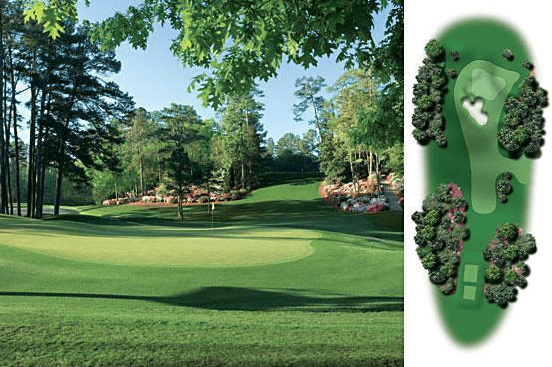
This is a hole for the gin fans and is a stunning downhill par 3 which requires only a mid to short-iron from most players. There is a large bunker in front of the green but the main defence on this hole is the undulation of the green. If you don't hit the meat of the green then the run-offs will help your ball off of the putting surface. Depending on the pin position this hole will play host to many three-putts, you've been warned.
You will likely never have heard of Billy Joe Patton, but in 1954, as an amateur, he almost caused a huge upset by defeating Sam Snead and Ben Hogan. He surged into the lead on the sixth hole with a hole-in-one on the final day.
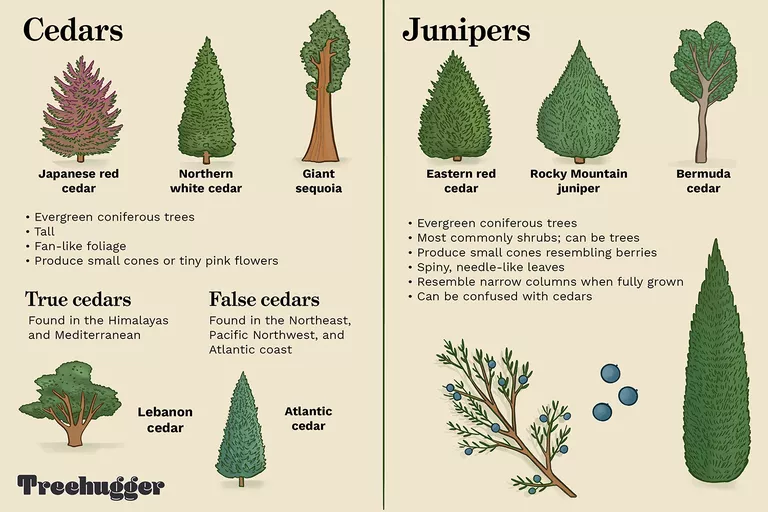
Junipers are trees belonging to the genus Juniperus. Junipers, however, are most commonly shrubs, though they can be trees as well. The plants often feature berrylike, bluish, glaucous, bloomy cones on the tips of their shoots. Some junipers also have spiny needle-like leaves.
Juniper trees, when they are fully grown, often resemble narrow columns. One of the best examples of this is Juniperus virginiana, or the eastern red-cedar, one of the several "cedars" that are actually junipers. It is the most common juniper in eastern North America. The most common juniper in western North America is the Rocky Mountain juniper.
All junipers produce small seed cones that resemble berries. The seed cones of the common juniper are sold as juniper berries. Juniper berries are a key ingredient in the production of gin.
https://www.treehugger.com/difference-between-cedars-and-junipers-4165305

The seventh hole has undergone significant change in recent years and the result is a challenging 450-yard Par-4. With the added length, No. 7 is now one of the hardest holes on the course. It starts off the tee where trees line both sides of the fairway with a tight driving window. Assuming players can find the fairway, it doesn't get much easier. Many players will be faced with an uneven lie on their second shot. The approach to the green is one of the most intimidating shots at Augusta National. Three bunkers guard the front of a small green with two more on the back. Failure to hit the green in regulation will often lead to a bogey or worse. No. 7 proved to be the fourth-hardest hole in 2013.
https://www.sbnation.com/golf/2014/4/7/5565526/augusta-national-course-preview-guide-masters-2014
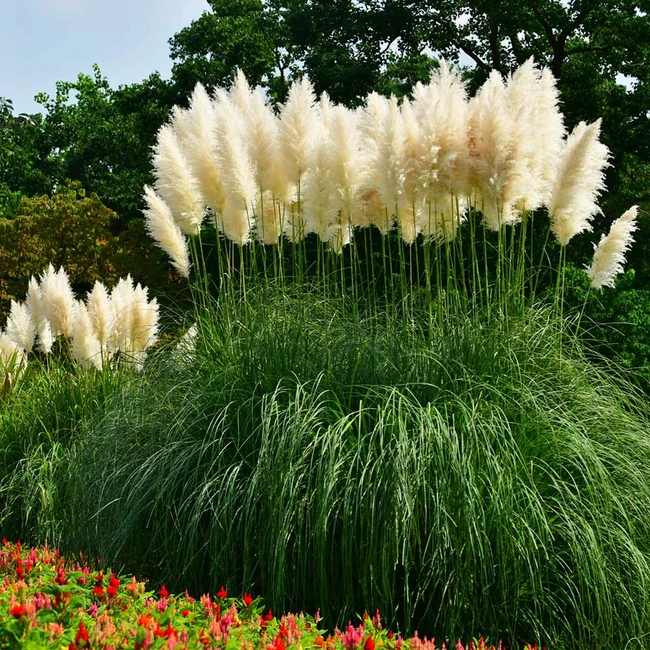
Growing eight to 10 feet tall, this elegant grass blooms with fluffy, billowing white plumes in late summer and fall. The white plumes are especially eye-catching in contrast to the plant's weeping green blades.
Easy-growing Pampas Grass is the ideal landscape solution for borders, containers, garden beds and more. It's perfect for adding height, texture and movement, wherever it's planted. And it thrives in a variety of climates - while it will grow best year to year in warm areas, it can be planted as an annual in cooler climates. It's resistant to pests and diseases - and it will flourish in most conditions, including poor soil and salt. This fast grower will seed and spread quickly, so be mindful of your planting area and be sure to cut it back as needed.
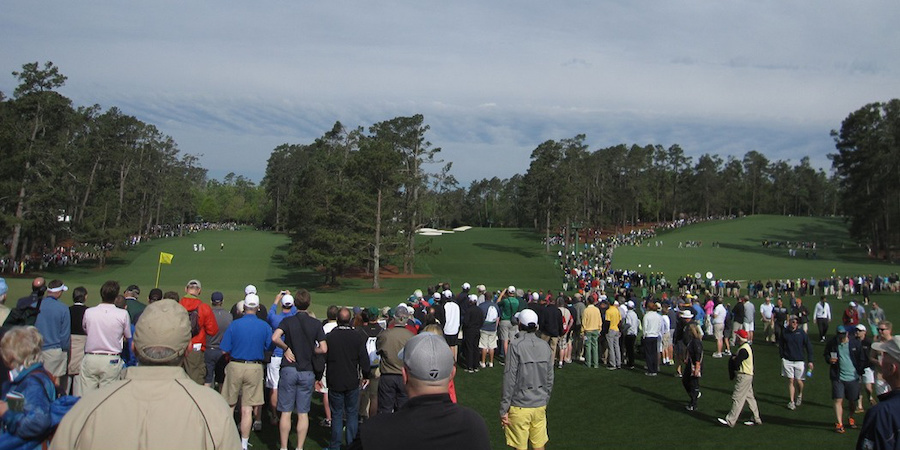
A three hole vista of the 7th, 3rd, and 2nd holes
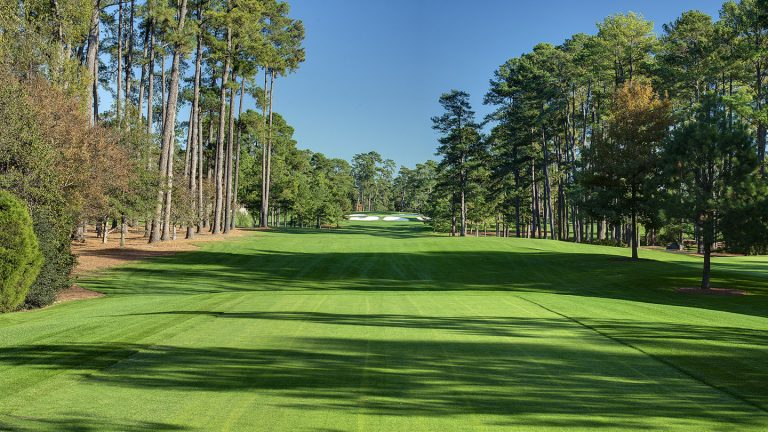
Here's a hole where you can go for the green in two, but it can be very risky. After a good drive, there's usually an opportunity to hit a smart lay-up shot that will leave a very accessible pitch. That strategy often provides a better opportunity for birdie than if you go for it in two and aren't successful.
Mistakes can be made easily by being too greedy with your second shot. You don't want to be down in the trees on the left side and behind the big mounds near the green. Also, depending on pin placement, there are a number of spots where if you miss it hole-high on the right, you'll have little room to pitch the ball.
Bottom line: If you're tempted to try for the green in two, think twice. I typically try to either hit a shot very close — say five yards short — or 60 or 70 yards away. I'm very comfortable with those distances. That said, I did go for it in the final round in 2013 and was able to hit a 2-iron onto the green. Unfortunately, I three-putted for par.
http://www.golfbytourmiss.com/2017/04/adam-scott-how-to-play-all-18-holes-of-augusta-nataionl
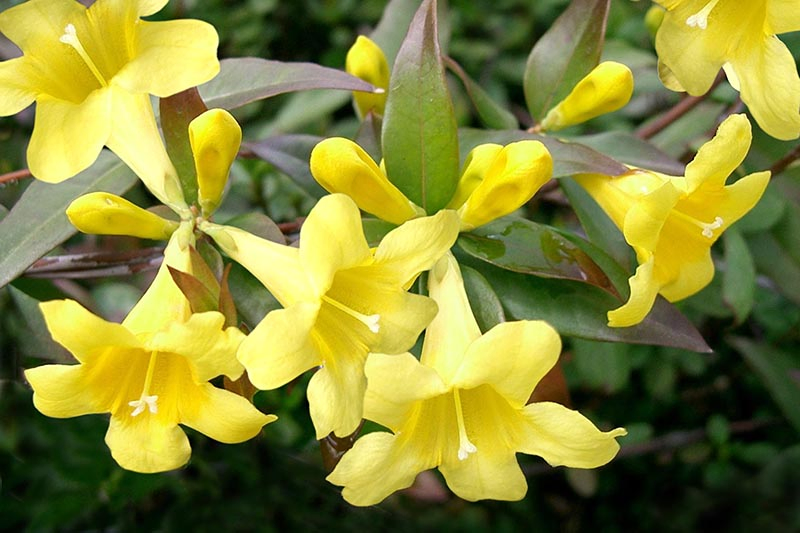
G. sempervirens is a colorful and beloved vine that is native to the southeastern and south-central United States as well as to Honduras, Guatemala, Belize, and Mexico. Climbing 10 to 20 feet up and over fences, trellises, walls, and anything else that gets in its way, this evergreen vine is a favorite for the cheerful color and heady perfume of its inch-long blooms borne on wiry reddish-brown stems. The appearance of its bright flowers is often taken as a sign that winter is coming to an end.
Yellow jessamine, Carolina wild woodbine, evening trumpet flower, poor man's rope, and Carolina jasmine are among the known pseudonyms attached to this plant.
https://gardenerspath.com/plants/vines/grow-carolina-jessamine
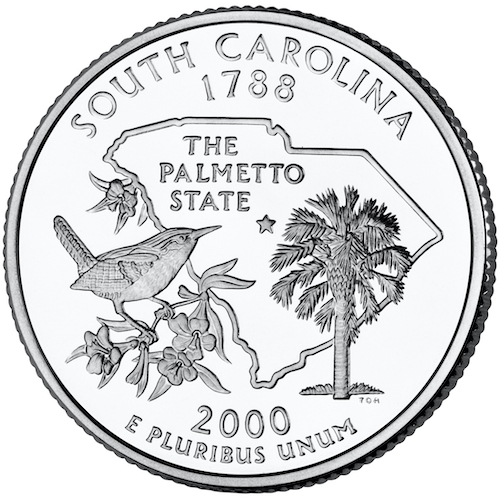
Their state quarter highlights the outline of the state and three symbols, Palmetto tree, the Carolina Wren, the Yellow Jessamine, its nickname The Palmetto State, and a star which indicates the state's capital, Columbia.
https://www.usmint.gov/coins/coin-medal-programs/50-state-quarters/south-carolina
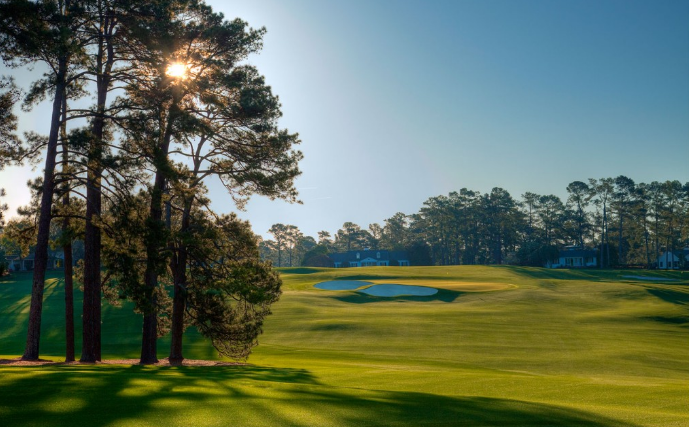
The 9th hole is a tough closing hole to the front nine, mainly due to the sloped green. The green slopes back to front at an almost unfair rate, calling for a pinpoint accurate second shot. The 9th is the start of Greg Norman's famous collapse in the 1996 Masters, with his ball rolling completely off the green serving as one of the more unforgettable highlights.
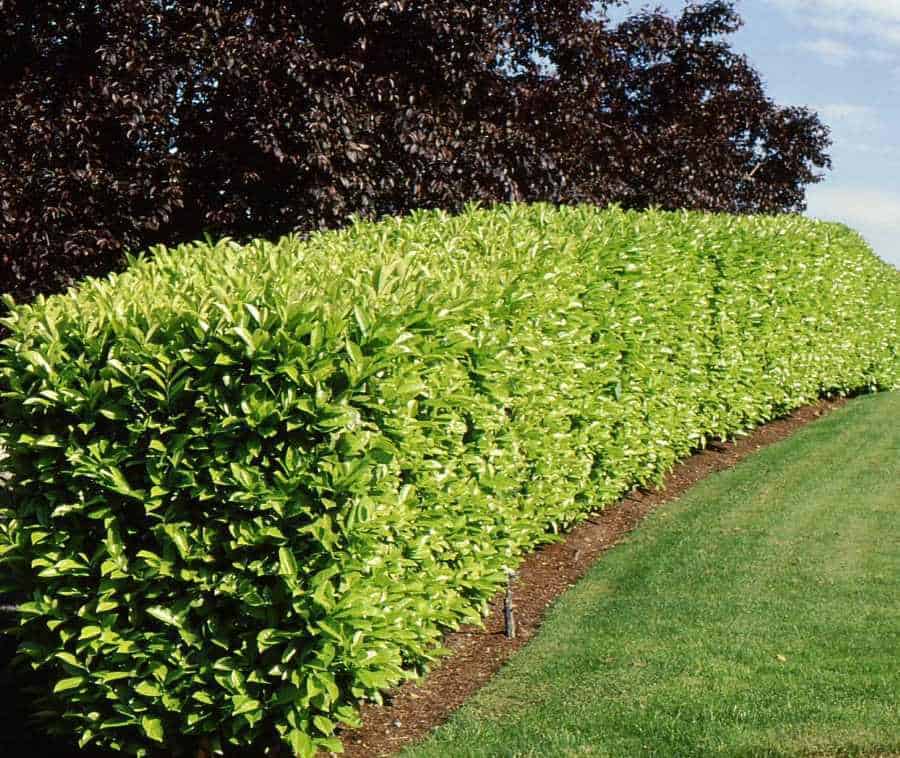
As a hedge, it can be trained up to 20 ft, as a tree it can reach up to 40 ft. abundant fruit and flower drop can be a problem when planted over paved areas, but is generally not a problem if it is used as a hedge and clipped regularly. Cream colored flowers appear from Feb. to Apr.
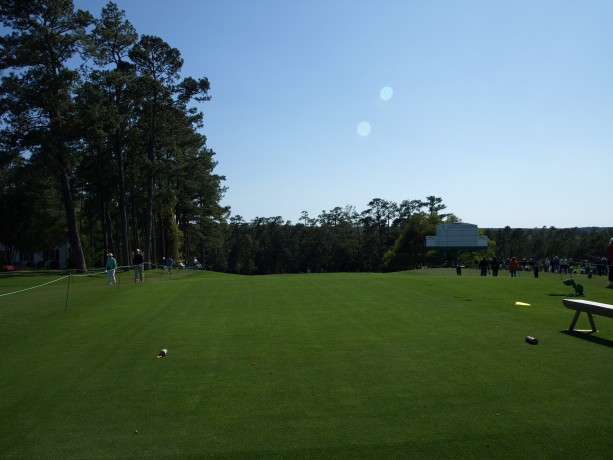
The start of the back nine and in the 2011 tournament, the scene of the Rory McIlroy meltdown. A triple bogey to loose the lead of the Masters and any chance of putting on the green jacket. This hole starts the ride on the back nine, what the Augusta National Golf club is famous for, picturesque fairways and the toughest stretch in golf, known as Amen Corner.
From the tee box, this dogleg left hole, seems to fall of the face of the earth. The only thing that can be seen is the top of the trees along the right side of the fairway. Players must draw the ball slightly or face playing their second from the pine needles. The fairway disappears in the distance.
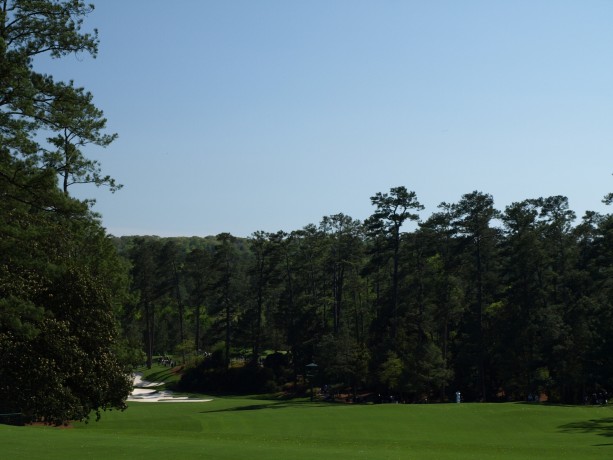
Elevation drop from the 10th tee to green is the same height as the Statue of Liberty.
Over the years there have been many changes to this hole. In 1934 it was actually the first hole, but due to the morning fog which could be found in the lower parts of the course, it was decided to have this as the start of the back nine. The green for the tenth was originally located partly behind but to the right of the fairway bunker. The issue with this was that rainwater drained to the green. In 1938 it was moved up the hill and further back from the bunker.
As we reach the end of the teeing area we start to see how far this hole drops away. It is equivalent to the height of the Statue of Liberty from tee to green, in elevation change. There is a view of how much this hole turns to the left. It becomes evident that a shot hit straight, or even worse with a fade will find the hole lengthened, or worse trouble in the trees.
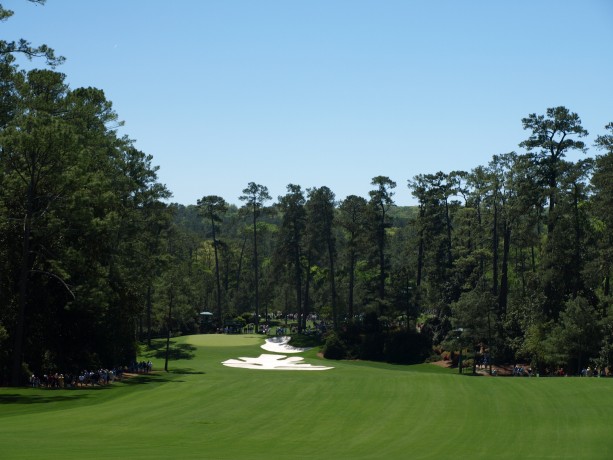
The green was originally beside the fairway bunker but later moved back
It is not until we look back from the green level that we get a full appreciation for how much elevation change there is. We can't see the tee box as it is still located around the bend. The view back from the 10th green shows how big the elevation change is to the tee
From here the action truly begins and champions made or broken, as we start our venture into Amen Corner. The phrase was first raised in a 1958 Sports Illustrated article by Herbert Warren Wind in trying to explain where the most exciting golf had taken place during the tournament. That place was the 12th and 13th holes.
The first where Arnold Palmer had to play two balls due to a local rule introduced due to the heavy rains that soaked the course in allowing players to lift and drop any embedded ball. Officials were unsure so Palmer holed out for a 5 with the embedded ball and 3 with the free drop. It wasn't until the 15th hole where the good news was received that the 3 should stand. The 13th saw Palmer sink an 18 foot putt for eagle, which saw Palmer win his first major.
http://www.aussiegolfquest.com/augusta-national-golf-club
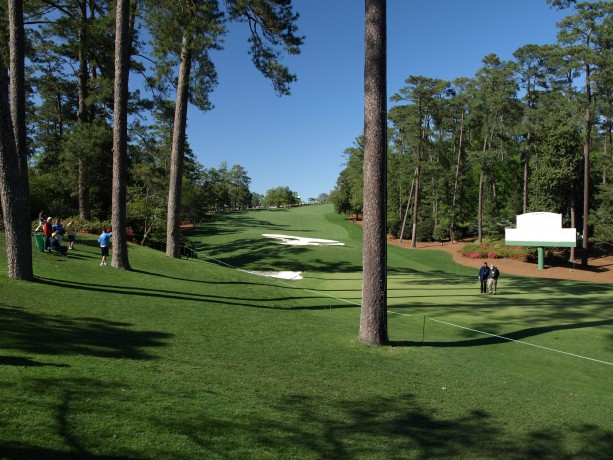
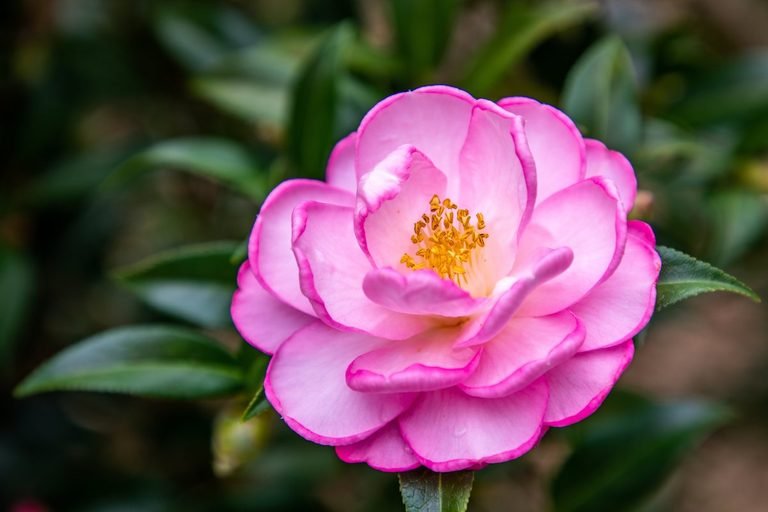
The lovely waxen flowers of a camellia bush are a symbol of southern elegance. Alabama even chose camellias for the state flower. Camellias have a reputation for being somewhat difficult to grow, but if you're willing to meet their needs, they'll reward you with a long bloom season just when you need it most, between fall and spring.
Though they're strongly associated with the southern U.S., camellias are actually native to southeast Asia. They're part of a large genus (Camellia), whose most famous member is one that's regularly dunked in teacups around the world. C. sinensis flowers may be insignificant, but the leaves are grown and harvested to make tea of all kinds.
https://www.birdsandblooms.com/gardening/growing-trees-shrubs-grasses/grow-camellias
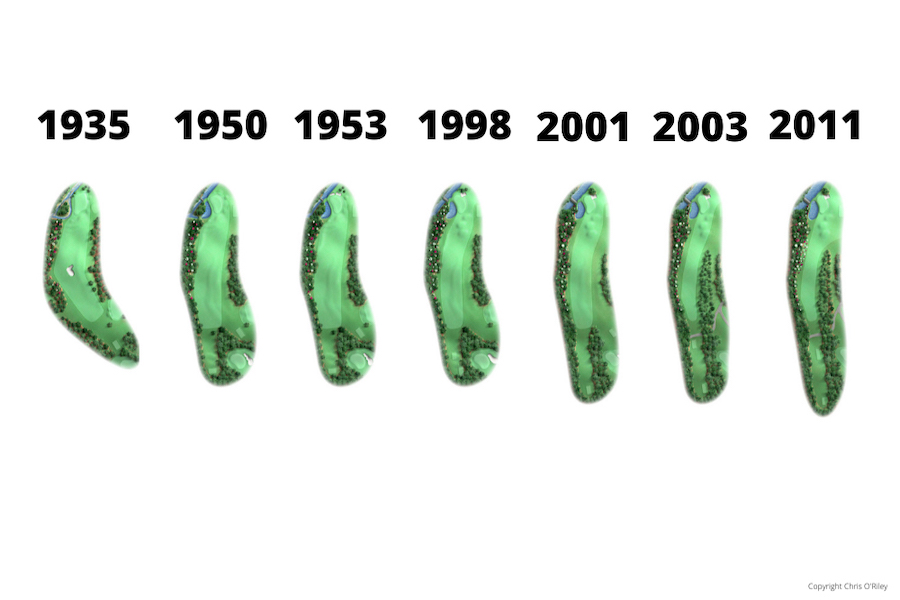
In 1934, White Dogwood was known as simply Dogwood. It was the second and played 415 yards. It's the beginning of Amen Corner. The second downhill hole in succession.
Trivia:The idea to dam the stream and to make a greenside pond was claimed by Clifford Roberts, Robert Trent Jones and Byron Nelson!
Alister MacKenzie's Original Design Strategy:
A unique take on the dogleg with the advantage given to the player who could place his drive to the furthest corner rather to the apex of the inside corner. A conservative tee shot made the approach harder. A bold tee shot made the approach easier. The green sketch reveals a flat green with 12-foot drop from the right side of the green and 10-foot drop from the entrance.
Hole Evolution:
Perhaps one of the holes that has changed more than any other. The original was played as a severe dogleg right without a centreline bunker according to Mackenzie's painting and drawing. The bunker appears on the November 1932 Olmsted As-built.
The original green was situated next to the stream until 1950. A pond that has grown in size replaced the stream. The centreline bunker disappeared, and two bunkers appeared behind the green in 1953. By 1998, the two became one and have remained since.
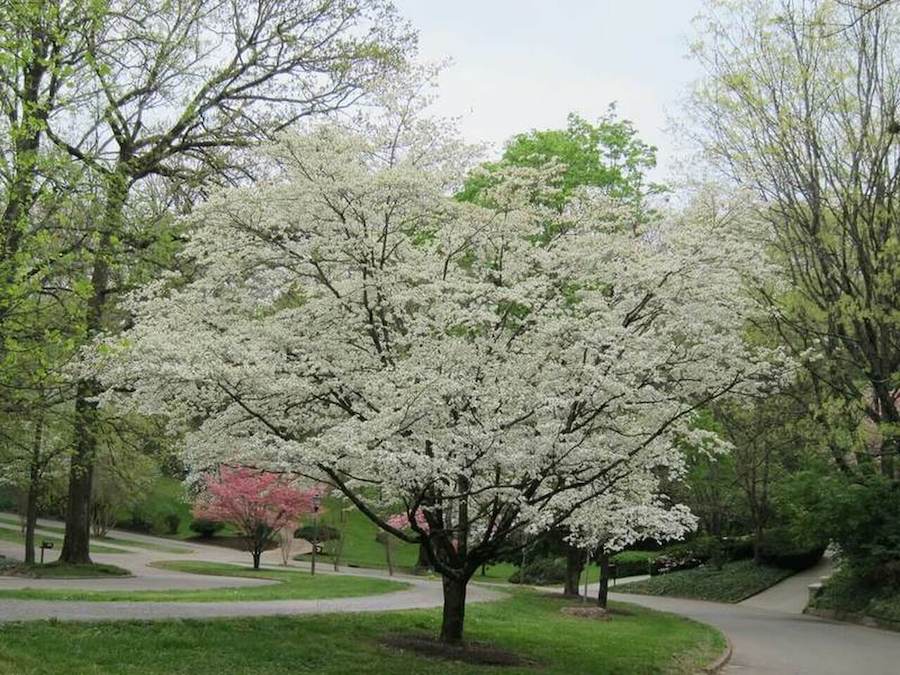
The beautiful White Dogwood tree, Cornus Florida is a flowering tree/shrub that produces white blooms each Spring. The bright red Fall foliage add to the beauty and charm and make this a great choice for almost every season.
It is a medium-sized tree which reaches about 25 feet in height once fully matured and can have a branch spread of about the same measurement. Growth rates depend on local conditions but can vary from 1-2 feet a year. They take on a pleasant dome shape as they mature.
Flowering with white or cream-colored flowers (actually leaves that mimic flowers) in the spring, the White Dogwood is a glorious harbinger of all that is wonderful after a long winter. The actual flower within the white leaves produces a small red fruit that birds can feed on. In fact, most parts of the tree, from bark to fruit to leaves to twigs, attract a wide range of wildlife from chipmunks to deer. In the fall the tree then produces another delightful array of purple and red colors as the leaves change for the Autumn.
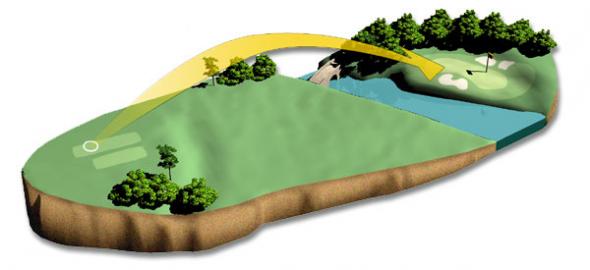
The second hole of Amen Corner, Golden Bell, is one of the most aesthetically pleasing holes in all of golf. Although this is a very short par-3, the green's location is a big challenge for the professionals.
The 12th hole's shallow green is sandwiched between sand behind and Rae's Creek in front. At one point it's only 9 feet in depth! The front edge of the green also slopes towards the water, which can be scary to think about from the tee.
The wind on Golden Bell can be hard to judge by players because of its location on the golf course. It is common for the swirling winds on the 11th green to be blowing in a different direction than the 12th even though they are a measly 50 yards away.
Analysis:
I would suggest hitting a half-club up off the tee on the 12th at Augusta. This hole may be short, but it is no joke and has stolen the green jacket away from many players in the past, most recently Jordan Spieth in 2016.
Hitting a little deep and landing in the trap shouldn't be a impossible task for the professionals to make par. An up and down from there is doable. What isn't doable is recovering from dropping a ball in Rae's creek.
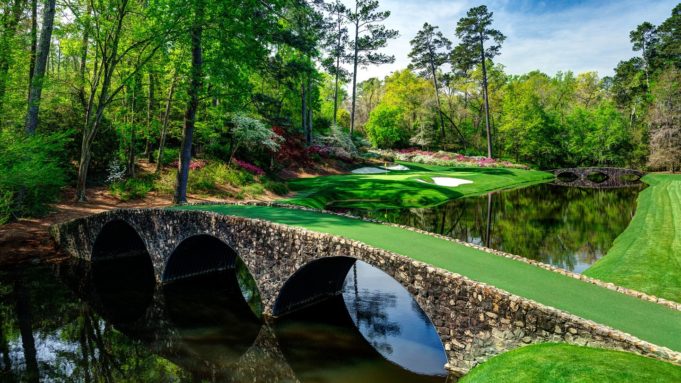
Short it's wet. Long it's in the sand. You decide what's worse when a green jacket is on the line. 2018 Scoring Average: 3.11 (9th)
https://www.golflegends.net/2019/04/10/the-masters-hole-by-hole-guide
Fred Couples: Living On The Edge:
Eighteen years ago, Fred Couples defied all odds to win thanks to a near miraculous par save on No. 12.
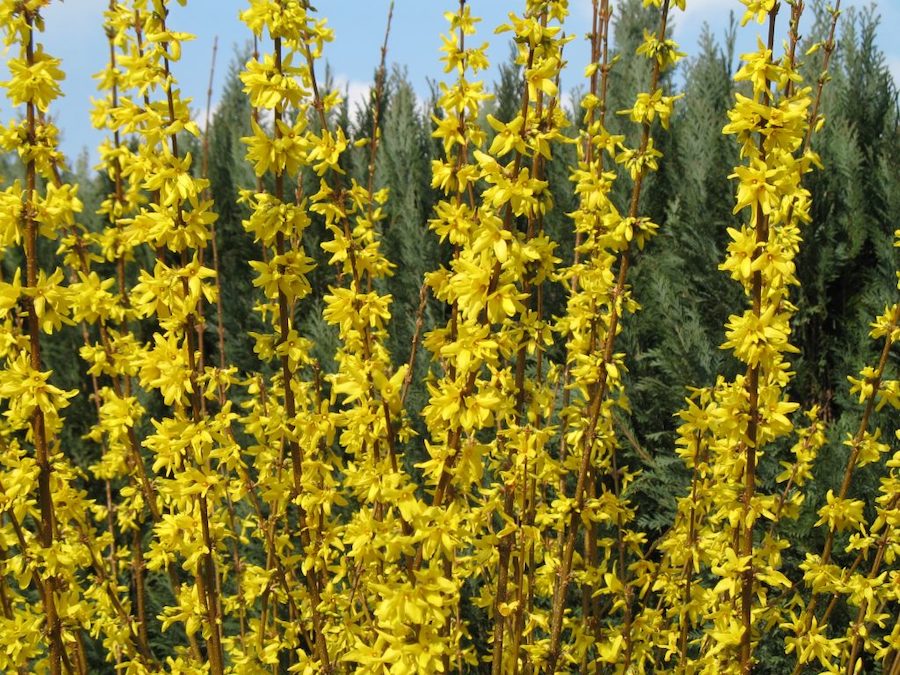
A genus of about 10 species of flowering plants in the family Oleaceae, native to East Asia. These plants are long-lived, but fast growing deciduous shrubs. They produce clusters of bright yellow flowers which usually come before the leaves, adding a dramatic effect in early spring. When it rains, the flowers turn into a pendant shape and protect their reproductive parts.
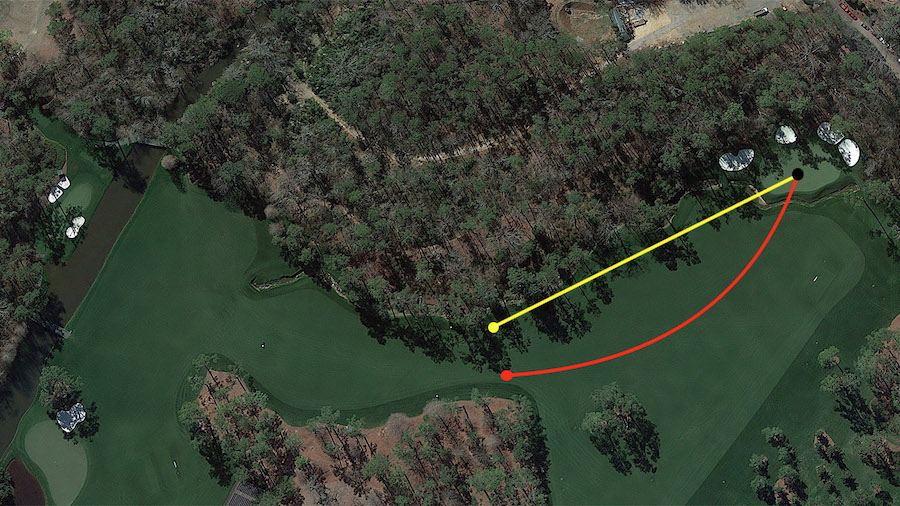
Over the past 50 years, it has evolved, and the best golfers in the world have started to play it in a fundamentally different way. Not everyone has liked these changes. For those who think the professional game is headed the wrong direction, No. 13 at Augusta National has become, if not Exhibit A, at least Exhibit C or D.
Jack Nicklaus, six-time Masters champion, was blunt in 2017: "In my prime, the 13th was not only one of my favorite holes but was also one of the best in golf. It presented its risks and rewards perfectly. But the golf ball has changed things. If you're not going to roll back the golf ball, you really need to lengthen the hole by 30 or 40 yards to test the players today."
In 2017, the club purchased land behind the 13th tee. Nothing but a service road has materialized there so far, but rumors abound
Alister MacKenzie's description of No. 13, published in The American Golfer in 1932 and reprinted in the first Augusta National Invitation program in 1934, is matter-of-fact: "This is played along the course of a brook with the final shot finishing to a green over the stream with a background of a hill slope covered with magnificent pine trees."
On Augusta's 13th, Jones and MacKenzie wanted to reward those who had the nerve to work their tee shots right to left, toward the tributary of Rae's Creek. A superb natural hazard along one side of the fairway, and a design that maximizes this hazard by offering an advantage—in the form of a shorter, more inviting shot into the green—to the player who flirts with disaster off the tee.
This is a risky play, and individual players may decide that the juice isn't worth the squeeze. But the rewards are clear. "The player is first tempted to dare the creek on his tee shot by playing in close to the corner," Bobby Jones wrote in his 1960 book Golf Is My Game, "because if he attains his position he has not only shortened the hole, but obtained a more level lie for his second shot. Driving out to the right not only increases the length of the second, but encounters an annoying side-hill lie."
Jones makes a key point here. The main challenge of No. 13 at Augusta National is not the dogleg, and it's not the water. It's the right-to-left slope of the fairway, which becomes less severe as it gets closer to danger. If you bail out right, you'll have to play your second shot from the side of the hill; if you keep tight to the corner, you'll get more of a driving-range lie.
The final brilliant element of the 13th hole is the angle of the green and its surrounding hazards. From the preferred left side of the fairway, the green is deep and the water runs more or less parallel to the line of play on the right. From the tilted right side of the fairway, the green and hazard run on a diagonal from low left to high right, clashing with the ball flight that the sidehill lie promotes.
A "really great course," MacKenzie wrote in 1932, "must give the average player a fair chance, and at the same time... must require the utmost from the expert who tries for sub-par scores." That's the original 13th in a nutshell. For the average player, a par or bogey was achievable; for the Masters competitor, a birdie was a tall order, and a championship-wrecking score was a possibility.
"It's probably the perfect golf hole," Geoff Ogilvy said, "and if it isn't the perfect golf hole, it's as close as you can get."
In 1934, only a handful of trees were really in play. A few on the inside corner of the dogleg prevented long hitters from taking the shortcut, and a pair in the middle of the corridor served as a starting-line reference and an additional bit of trouble for those who hedged right. By the mid-70s, the tree lines had filled in on both sides. Going right of the centerline sentinels was no longer a viable option, but the hole was still wide. Also, at 485 yards, it was long enough to lure players close to the stream in pursuit of a less daunting second shot. Its strategic identity intact, No. 13 remained more or less the same between the 70s and the late 90s.
Every year, it was one of the most spine-tingling shots to see the pros attempt, up there with the tee shot on 12 and the approach to 15.
But then 1997 happened. On his way to an era-defining 12-shot victory, Tiger Woods played the 13th hole differently than anyone else. He not only hit his drive farther, but he also sent it well away from the brook, toward the top of the hillside. Why? He had such a short approach that the sidehill lie wasn't much of a threat. On Sunday, his smooth 30-degree 5-iron to the middle of the green almost looked easy.
What was striking about Tiger's final-round performance on No. 13 wasn't just the power and purity of the strikes, or the way he reduced the hole to a mid-length par 4. It was that everything he did felt safe. His drive was never in danger of going in the water, and his approach flew high, landed soft, and left plenty of room for error. Neither shot seemed risky for him. And this hole was supposed to be all about risk, all about the potential for catastrophe.
Granted, no one but Tiger Woods could hit these shots in 1997.
At the 2002 Masters, ANGC unveiled a new tee on No. 13, stretching the hole from 485 to 510 yards. But the more consequential changes had started earlier. In the late 90s, the club began filling the right half of the playing corridor with trees, creating a bottleneck about 270 yards off the tee. The edge of the fairway gradually crept down the hillside, and a carpet of pine straw appeared under the now-dense canopy of trees. What had been an open field in 1932 was now a slim, left-turning passageway through the woods.
Before the era of Tiger Woods and the Pro V1, players had willingly hit hooks around the corner. Now the hole would make them do so.
https://thefriedegg.com/no-13-at-augusta-national-architecture-analysis
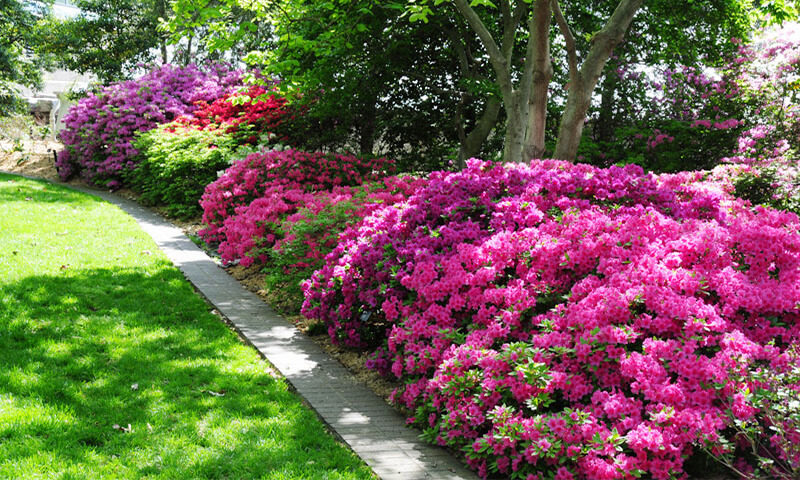
These irresistible, gorgeous shrubs come in many color varieties that suit all different types of landscapes. Their vibrant colors add character to any garden, providing breathtaking blooms for you to enjoy. While azaleas have the reputation for being persnickety, with the right tips you can care for them with ease! Azaleas require fairly specific care, beginning with how you plant them. Start a wonderful relationship with your Azaleas by selecting the proper location for them to grow. Find an area around your house that receives fairly decent exposure to sunlight, but that also provides a thin layer of shade. Azaleas thrive when they grow under partial cover, such as under a tall tree. Ensure that they take root in an enriched, well-drained soil that is acidic in nature. Avoid soggy or clay-heavy areas, as they can contribute to poor root growth or root rot.
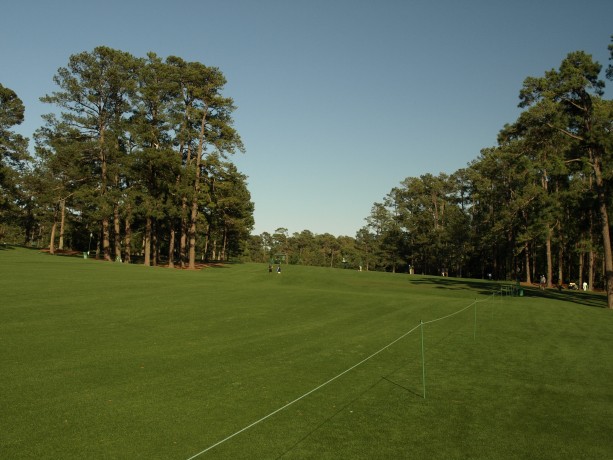
This hole is a slight dog-leg left and the only one on the course without a bunker. The preferred line is to hit slightly left to allow the slope of the fairway to take the ball right. Longer hitters will manage to carry the hill but the majority will play slightly short of it. Anything left near the trees will make the approach difficult. This is one place to ensure you have a clear approach as the green is very difficult.
A large open fairway - critical to stay middle to right
The green is protected with various mounds and contours at the front, but also terraces down from the left side to right. Any pin position on this green which are short right or long left are extremely difficult to play. The 14th is one of the toughest greens on the course due to the many undulations
https://aussiegolfquest.com/augusta-national-golf-club
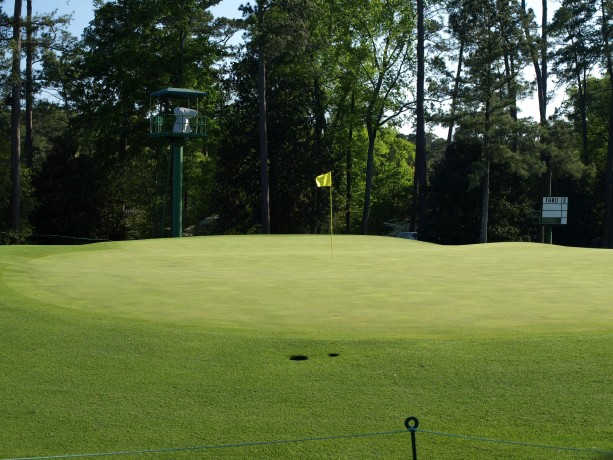
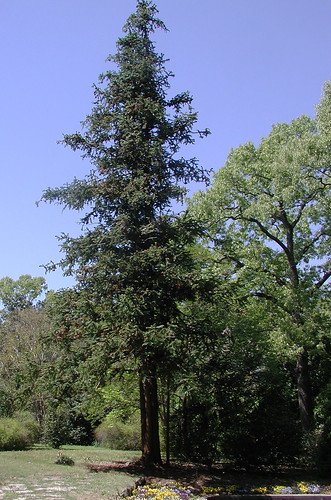
China fir is an unusual, prehistoric looking tree that can be spotted throughout Arkansas. China fir is a tall evergreen conical conifer capable of reaching 150 feet in height in a mild climate but in most parts of North America it mostly grows in the 30 to 50 foot tall range. Like many conifers it is reasonably handsome as a young plant but with age tends to drop its lower branches and become scruffy looking. It has brown bark that peels off in linear strips exposing reddish inner trunk. The tree, because it is capable of suckering from the root crown, often has several trunks.
Up close the sharp, pointed, lance-shaped evergreen needles are around 2 inches long and spirally arranged around the stem but those on the lower side of the stem twist around to give the appearance of being two ranked. The typical form is a medium green but the selection ‘Glauca' has blue-gray foliage and is the most often seen in contemporary gardens. The needles persist up to five years and then hang onto the stem for several years after they die adding to its disheveled appearance.
https://www.uaex.uada.edu/yard-garden/resource-library/plant-week/china-fir-03-27-2015untitled.aspx
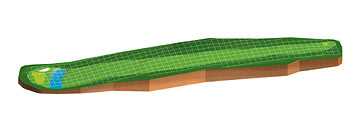
A reachable par 5 when winds are favorable, many golfers will attempt to reach the green in two. A well hit second shot must be made over the pond and away from the bunker that guards the green on the right. Gene Sarazen hit "the shot heard 'round the world" when he scored a double eagle in 1935.
Mounds on right side of fairway have been flattened and now hold 20 pine trees, which could severely penalize any errant tee shot. Slight mound on the right of the green has been removed and six pine trees planted. Still can be reached in two, but second shot is over a pond.
A cluster of pines trees replaced mounds on the right that put a greater premium on accuracy and makes the hole play longer. Still reachable in two, but pond guards the front and any approach must avoid bunker on the right.
The hole on which Gene Sarazen made his famous double-eagle in 1935. The landing area for the tee shot has been modified over the years and now presents one large mound and several smaller ones, reducing the width to only 30 yards. The tee remains close to where it began, slightly to the right of the original.
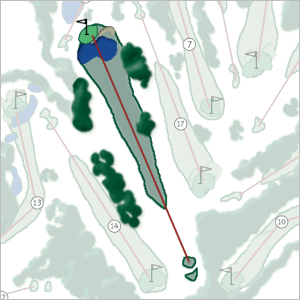
Fred Couples says:
Another hole where you just swing as hard as you can. You get down there and you're left with anything from a 2-iron to a 6-iron -- all depends on the weather or how hard the fairway is -- to a green that just sits there and it looks so easy.
But if you come up short, obviously you go in the water and when you go over, it's probably a 3 out of 10 chance of getting it up and down.
Another hole, where I've done well on and I've picked the wrong club for a second shot and knocked it over the green and made a lot of pars, which is hard when you feel like you're going to walk away with a birdie. It's a tough green to putt.
Jack Nicklaus says:
Here again, hit it is as hard as you can, trying to miss the mounds on the right and the trees on the left. You have to hit it long enough to play an iron that will be accepted into the green. If you're standing back there with a 3-wood, it's like playing to the hood of a car.
It's a difficult pitch if you lay-up short of the water, and it's an even more difficult pitch from over the green. It's a par-5 that most of the fellows will make a lot of 4s on, but you've got to be a little careful.
The eagle I made here in 1986 was a special moment in what I consider my most memorable Masters victory. Despite what I did on the other holes, I really believed that to win the Masters that day I needed to eagle the 15th. I hit a good drive into a slight breeze, leaving 202 yards to the hole. My son, Jackie, was my caddie that week, and I remember turning to him and asking, "How far do you think a 3 on this hole would go here?" I had a 4-iron in my hand, but I wasn't talking about changing clubs. I was referring to the score. Jackie answered, "A long way." The shot never left the flag and landed just shy of the hole, stopping 12 feet away. Augusta National has eliminated the mounds right of the fairway and added several trees, so a long, straight tee shot is an absolute must if you want to make up some ground here. Another motivation for a good drive is that the third shot— a downhill pitch over water to an elevated green—is a very difficult shot. You want to get yourself to the green in two, even if you put it in the bunker right of the green. I always favor the right side of the green and prefer not to hit a draw unless I'm playing 3-iron or less.
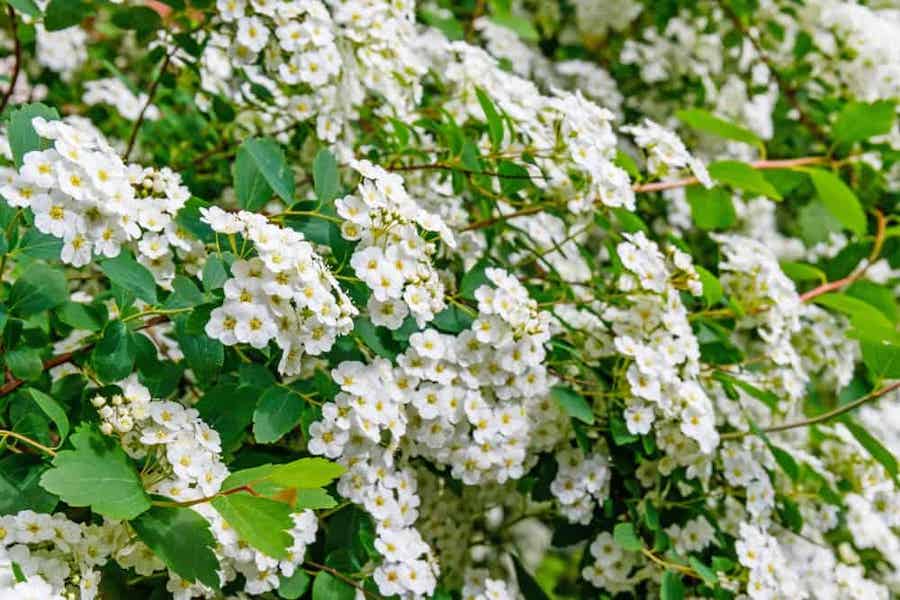
Firethorn, also known as pyracantha, is an evergreen shrub and is a part of the rose family. This evergreen shrub is native to Southeast Asia and Southeast Europe.
Firethorns can grow up to 20 feet or 6 meters in height. Most of the times, the different species of firethorns have white flowers wither orange, yellow, or red berries. The beautiful flowers on this shrub blossom during the late springtime or the early summertime, whereas, the berries grow during the late summertime and mature during late autumn.
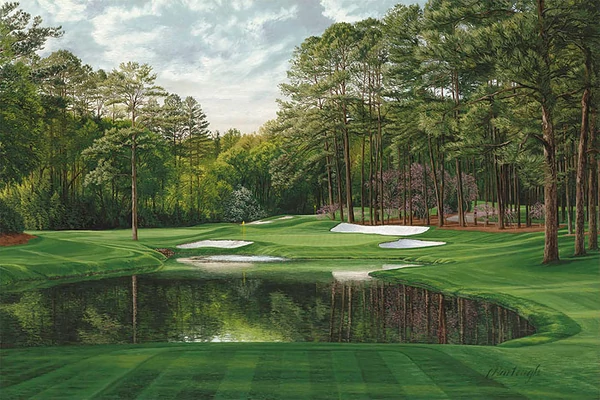
For the first few Masters the 16th measured 145 yards and was protected by just a small stream in front of the green and, interestingly, the tee was to the right of the 15th green. Then, after WWII, Robert Trent Jones moved the tee to the left and built the pond that we see today and positioned the green diagonally.
His son Robert Trent Jones Jr said: "Sixteen is one of his great pieces of golf art, the highest accolade you can pay in our business. There are lots of wonderful courses but only a few that when you walk in, like a Monet painting, you feel like you're in the garden."
It's now only 25 yards longer these days but it's served up all manner of treats and mischief over the years. Jon Rahm caught the early headlines in the week when he skipped his ball to a back pin and into the hole. Amateur Ross Somerville had the first hole-in-one in the first year of the Masters in 1934 – he hit a mashie niblick – and Justin Thomas made it 21 aces last year when he sunk his 8-iron.
The 1970 champion Billy Casper holds the unwanted record of the highest score when he ran up a 14.
The hole's detractors say that the Sunday pin is simply a big plug hole that gathers the ball and, get your line and length right, you should be pretty adjacent. Get it wrong and you'll face either a treacherous putt, chip, bunker shot or even another shot at it.
The really juicy pin position is when it's on the back right shelf where the monotony of players' balls rolling down the hill to the Sunday pin is occasionally broken as one or two can't help themselves and leave themselves in the sand and, almost certainly, drop a shot. This was the Sunday pin at one stage before logic, and TV, said that the hole would move to the bottom of the slope.
Part of the beauty of it is its timing. Get the 12th wrong and you've got two par 5s in the next three holes to try and claw things back, get 16 wrong and you're then faced with two stiff par 4s and your head, 70 holes in, in a mess.
The last time a winner did just that was when Trevor Immelman doubled it in 2008 - since then not one champion has dropped a shot and five of the past 11 winners have made a birdie on Sunday. Go back a little further and we have Tiger Woods at the back of the green playing one of, if not the most iconic shots in the history of the game.
https://bunker-mentality.com/blogs/bunker-blog/the-beauty-of-augusta-national-s-16th-hole
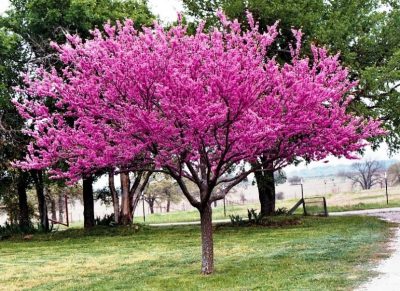
The gorgeous Redbud tree (Cercis canadensis) is known for its super vibrant magenta flowers that bloom in the spring and pop against the greenery it is often nestled amongst. This beautiful tree also known as the "Judas Tree" can be seen all over the USA, in parts of Mexico and as far north as Canada but tends to thrive in the East where there is plenty of rainfall to keep the soil moist.
In addition to the pretty blooms, the trunk of the Redbud tree also holds its own unique appeal growing in a twisted, zigzag pattern with a red brown hue. The blooms make an appearance in late spring to early summer and often in clusters on the stems and even the trunk on a few species. Redbud flowers will last anywhere from two to three weeks and the heart shaped leaves will add a bit of antiquity to the backyard lending a bit of something unique to the landscape.
https://backyardville.com/growing-and-planting-a-redbud-tree
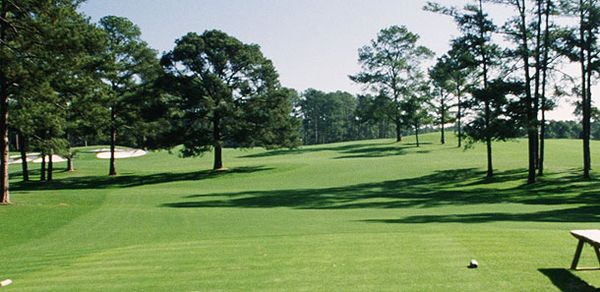
Here's a take: #17 at Augusta National (Nandina) stinks.
Before the congregation comes at me for blasphemous statements against the hallowed sanctuary that is Augusta National Golf Club, I'll say that on most other courses, it would be a solid golf hole.
But its current circumstances don't allow for the benefit of the doubt. Please think about Nandina and answer two questions:
- Why is it hard?
- What is unique about it?
The first question is most difficult to answer based on what I see via the telecast and have learned over the years from Ian Baker Finch, who covers the hole for CBS. The hole clearly plays as one of the harder on the back nine with a 4.19 historical scoring average, but unlike 11 with the intimidating second shot and obvious trouble left, 17 possesses no real hazards. 14 has carved out its role as a unique test with one of the crazier greens on the course, a bunker-less breath between the excitement of gettable par 5's. Augusta already has the onerous par 4 with a deep front bunker and segmented green in number 18, a classic uphill finisher making 17 a bit redundant in its current form.
RIP Ike, his tree, and the excitement of #17:
Long live the left to right ball flight.
With the loss of the Eisenhower tree in 2014, CBS lost its narrative for Nandina. That tree was the hole's identity and an easy anchor for what made #17 unique. When the final groups walked up the back hill from #16 green, Nantz just had to play the hits: mention Ike, play up the tradition and lore of Augusta, and let IBF take over. Nandina was a potent elixir of patriotism and nostalgia, but without that tree, it's now just a long par 4 they've had to make longer due to modern technology. On top of that, the CBS cameras are poorly positioned and don't give us a feel for the blind second shot into what's one of the hardest greens on the course. How about giving us a topographical map or view of where the green breaks instead of the watered down fly over of a bland hole that hardly mentions the difficult green complex? But hey, I should cut CBS some slack...
The bombers get up on top of the hill for an easier 8 or 9 iron in while the Kuch's and ZJ's have a much tougher blind mid-iron into a rock hard green.
Yes, I do respect the degree of difficulty watching pros sling darts into a difficult pin, but I'd love to hear someone tell me that a drive or approach on 17 was a shot that stuck with them.
https://nolayingup.com/blog/stinky_nandina
Jack Nicklaus 1986 Masters 17th Verne Lundquist Maybe Yes Sir!
Jack's putt at 17 at the 86 masters with Verne's legendary call
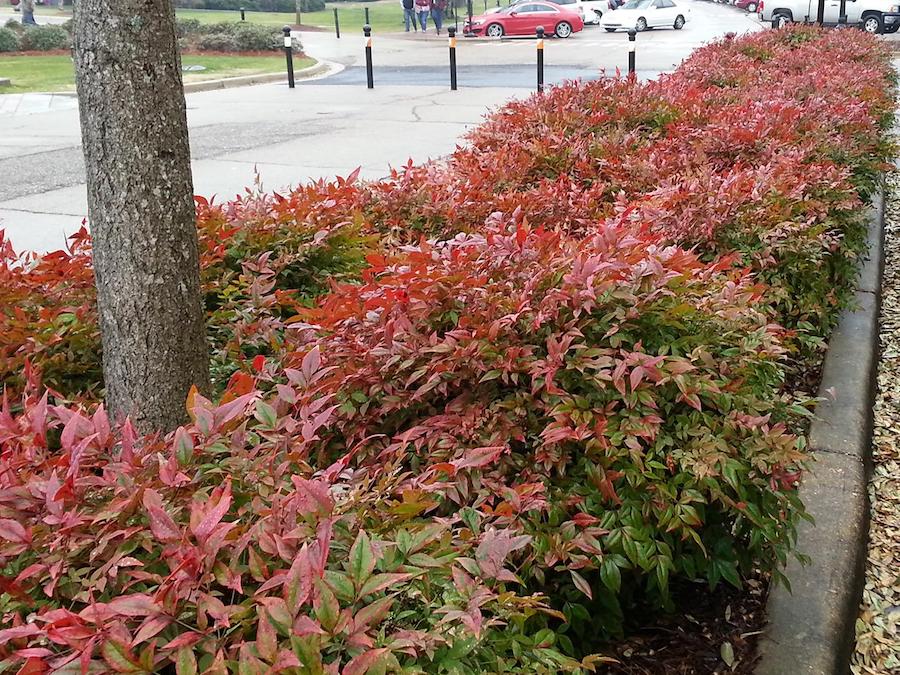
In days gone by, nandina was called heavenly bamboo or sacred bamboo, and it was used to decorate home alters and temples in China. The upright growth of the main canes creates an arching appearance that does indeed resemble bamboo. This plant is certainly tropical and exotic looking.
Leaves are compound and bisected three ways. They are a bright, glossy green in the summer, but they really shine in the winter with a fiery array of reds and burgundies.
Left unpruned, nandinas can growth up to 8 feet tall, but 5 to 6 feet is typical. Another growth trait similar to bamboo is that the plant is rhizomatous, meaning it has a very strong, growing root system, and the plant spreads by clumping.
Nandina domestica flowers in the spring with big panicles of white clusters. In the fall and winter, the berries are the main event. The clusters of red berries start upright; as the berries mature, the clusters weigh down the canes.
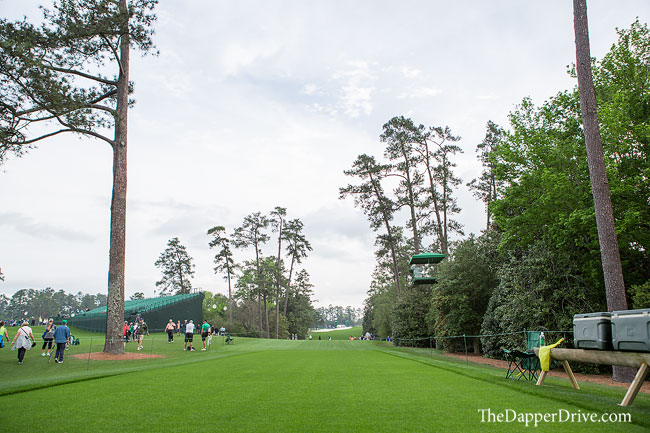
Spectating:
One of my favorite spots is standing directly behind 18 tee, watching players smash drives through the narrow opening on the home hole. It doesn't lend to seeing much other action (17 green is somewhat in view), but if you can grab a spot right on the ropes, it's a beautiful view of the final hole that often will decide the Masters champion.
18th Green:
So here's the deal. You area allowed to bring fold-able chairs (with no arm rests) into Augusta and set them next to any green for spectating. You can then leave them unattended as you walk the course throughout the day, and come back at any time to sit in your claimed spot! It's a unique aspect of spectating at Augusta National. With that in mind, if you're planning to arrive when gates open (8am most days), I'd head straight for the 18th green and claim your spot. Once you've seen all you wanted out on the course, head back and enjoy watching groups finish their rounds.
I like to show-up at 8am, walk the course in the morning, and then do some hopping between the aforementioned viewing spots during the afternoon. It's a hilly property, so if you plan to do a lot of walking, prepare to be tired by day's end.
https://thedapperdrive.com/masters-10-best-spots-augusta
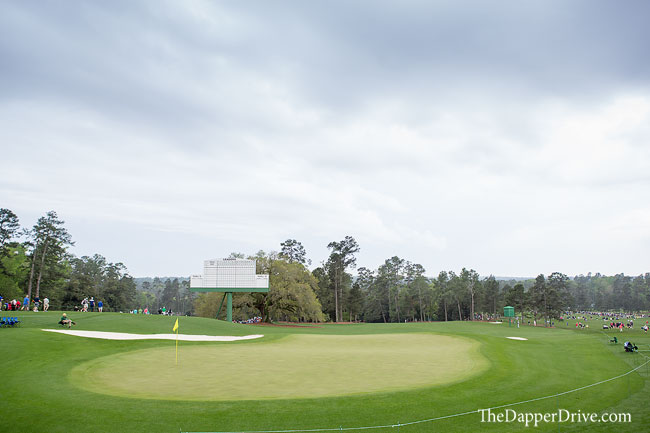
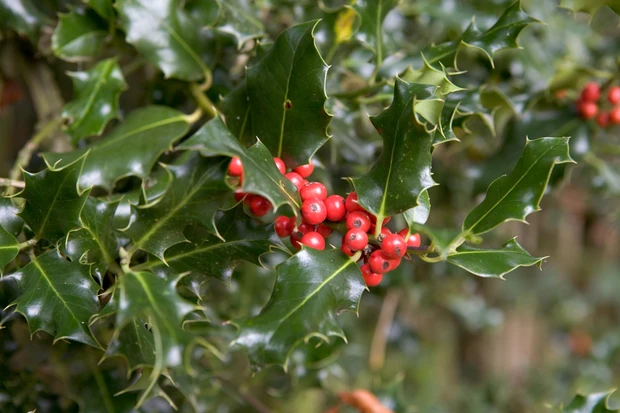
Everyone is familiar with common holly, Ilex aquifolium, with its glossy evergreen leaves and red berries. But there are lots of other varieties to grow, some with attractive foliage and berries that range in colour from orange to purple.
Hollies are easy to grow – they will grow in sun or partial shade, and prefer moist but well drained soil. The variegated varieties keep their colours better in full sun. Hollies can be grown as specimen plants in a lawn, or in a mixed or shrub border, and some make excellent hedges – great for garden security. They need minimal pruning – just remove any diseased or wrongly placed branches in spring. Trim holly hedges in late summer.
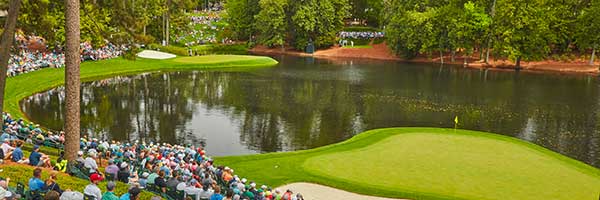
One of Augusta's most famous members, General Eisenhower can lay claim to no less than three landmarks at Augusta, it is Ike's Pond which has the biggest impact on play at the National. During Eisenhower's second visit to Augusta he visited some woods to the East of the property where he informed Clifford Roberts that he had found a great place to place a dam should the club ever wish to build a fishpond. It was then constructed to create a three acre pond fed by a spring. The engineer in charge of the project built the dam in exactly the position which Eisenhower marked, showing he not only had a talent for leading a country but also for engineering!
https://www.yourgolftravel.com/19th-hole/landmarks-of-augusta-national
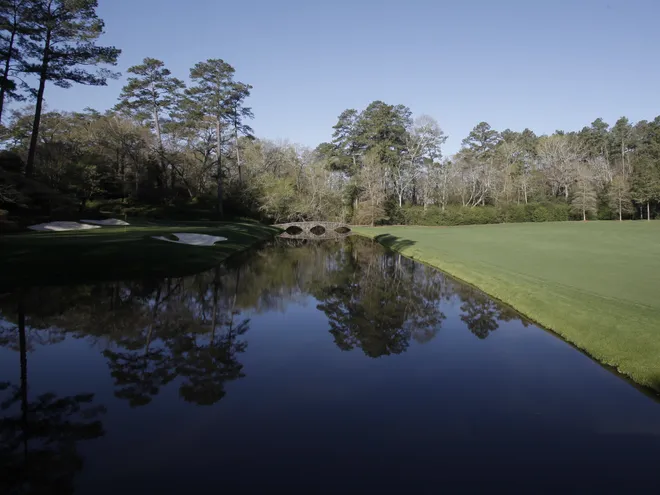
Rae's Creek flows gently through about 10 miles of Augusta, Georgia, cutting into the famous golf course and, at 60 feet wide and 4 feet deep, fronting the green to the par-3 12th and serving as main antagonist at Amen Corner.
One of the most infamous chapters of the creek's history is very fresh. At last year' s Masters, leader Jordan Spieth dumped two balls in Rae's Creek and carded a quadruple-bogey 7. He battled, but never fully recovered, finishing tied for second and three shots back.
Some Rae's Creek history:
- It's named for one of Augusta's founding fathers, an Irish trader named John Rae, who settled in Augusta in 1734. Rae was a farmer, rancher and even operated a ferry service at the confluence of Kenyons Creek and the Savannah River. Rae died in 1789, around the time Kenyons Creek was becoming officially known as Rae's Creek.
- Rae's Creek branches out into 74 tributary streams along its 10 miles. The narrow creek that runs along the left side of No. 13 and cuts across the front of its green is a Rae's Creek tributary, though many mistakenly refer to it as Rae's Creek.
- The pond left of the No. 11 green was once fed by Rae's Creek, before a dam was built in 1950.
- Augusta National lore includes the story of former President Dwight Eisenhower, a club member, hitting his tee shot on No. 12 into Rae's Creek, where it nestled atop a jut of sand sticking above the water. Urged to wade in toward the sand bar and play the shot, Ike quickly sank to his knees in mud and had to be rescued by two Secret Service agents.
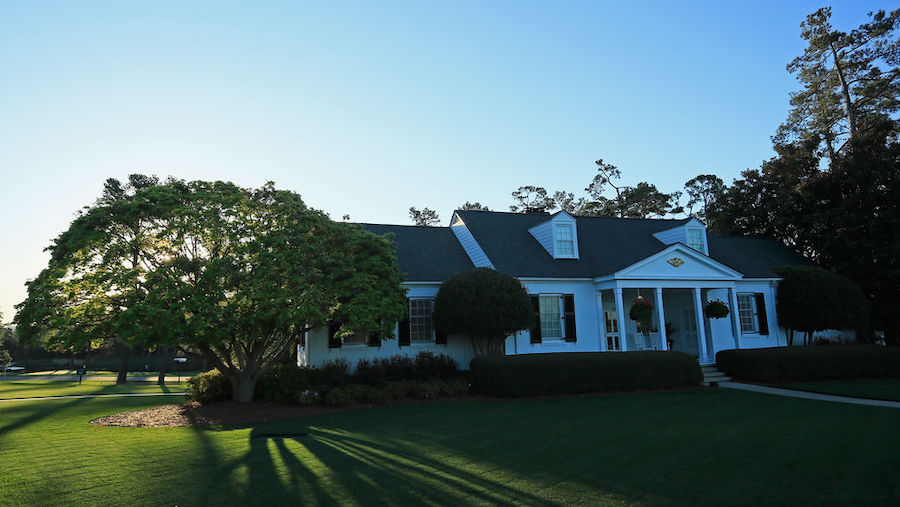
There are ten cabins on the grounds of Augusta National. The best known of these is the Butler Cabin.
Why is the Butler Cabin the best known of them all? Every year, American TV network CBS hosts its broadcast from inside it and, when you see the Masters champion, defending champion and low amateur together speaking to Jim Nantz in a room at the end of the tournament, that's from the basement of the Butler Cabin. It's where the champion is also first presented with the Green Jacket before the official presentation on the 18th green in front of the patrons a few minutes later.
Thomas Baldwin Butler:
The Butler Cabin takes its name from a chap called Thomas Baldwin Butler. He was a regular player partner of fellow Augusta National member, President Dwight Eisenhower, after whom another one of the cabins is named. A third cabin is named after Clifford Roberts, President Eisenhower's personal adviser and friend, the club's first chairman and Jones' business partner when the course was first built.
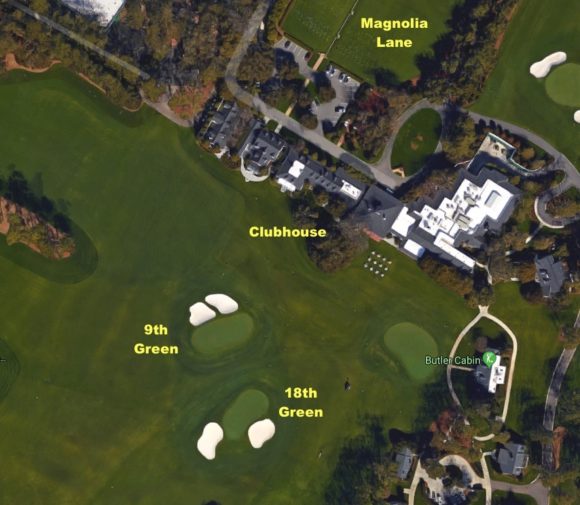
The Butler Cabin is situated between the clubhouse and the Par-3 Course – as shown in the map above – beside the practice putting green and tenth tee box. It was built in 1964 and CBS first started using it in 1965. For most of the year, it is available to members and guests of members as accommodation.
https://www.bunkered.co.uk/golf-news/the-masters-what-is-the-butler-cabin
From late May until some time in October. When it opened in the 1930s, Bobby Jones wanted Augusta to be a "national" club in the sense of attracting wealthy executives from all over the States.
Winter was not only the best time for them but also the best time for Augusta's climate. In this part of Georgia, the summer temperatures remain in 90s throughout June, July and August. May and September temperatures are also in the high 80s. Add in extremely high humidity, which can hit 100% in July, and summer golf in Augusta wouldn't be a whole lot of fun.
Finally, golf followers will know that things are constantly being remodelled at this most famous of golf courses.
This often-extensive work is undertaken during those summer months when no golf is being played.
Many of us will be looking to get as much golf as possible in during the summer months. But it's the complete opposite for members at Augusta, where golf is a late autumn, winter and early spring pastime.
https://www.golfmonthly.com/tour/us-masters/augusta-blog/is-augusta-open-all-year-212678
| Champions | ||
|---|---|---|
| 1934 | Horton Smith | −4 |
| 1935 | Gene Sarazen | −6 |
| 1936 | Horton Smith | −3 |
| 1937 | Byron Nelson | −5 |
| 1938 | Henry Picard | −3 |
| 1939 | Ralph Guldahl | −9 |
| 1940 | Jimmy Demaret | −8 |
| 1941 | Craig Wood | −8 |
| 1942 | Byron Nelson | −8 |
| 1943 | Not Played | |
| 1944 | Not Played | |
| 1945 | Not Played | |
| 1946 | Herman Keiser | −6 |
| 1947 | Jimmy Demaret | −7 |
| 1948 | Claude Harmon | −9 |
| 1949 | Sam Snead | −6 |
| 1950 | Jimmy Demaret | −5 |
| 1951 | Ben Hogan | −8 |
| 1952 | Sam Snead | −2 |
| 1953 | Ben Hogan | −14 |
| 1954 | Sam Snead | +1 |
| 1955 | Cary Middlecoff | −9 |
| 1956 | Jack Burke Jr. | +1 |
| 1957 | Doug Ford | −5 |
| 1958 | Arnold Palmer | −4 |
| 1959 | Art Wall Junior | −4 |
| 1960 | Arnold Palmer | −6 |
| 1961 | Gary Player | −8 |
| 1962 | Arnold Palmer | −8 |
| 1963 | Jack Nicklaus | −2 |
| 1964 | Arnold Palmer | −12 |
| 1965 | Jack Nicklaus | −17 |
| 1966 | Jack Nicklaus | E |
| 1967 | Gay Brewer | −8 |
| 1968 | Bob Goalby | −11 |
| 1969 | George Archer | −7 |
| 1970 | Billy Casper | −9 |
| 1971 | Charles Coody | −9 |
| 1972 | Jack Nicklaus | −2 |
| 1973 | Tommy Aaron | −5 |
| 1974 | Gary Player | −10 |
| 1975 | Jack Nicklaus | −12 |
| 1976 | Raymond Floyd | −17 |
| 1977 | Tom Watson | −12 |
| 1978 | Gary Player | −11 |
| 1979 | Fuzzy Zoeller | −8 |
| 1980 | Seve Ballesteros | −13 |
| 1981 | Tom Watson | −8 |
| 1982 | Craig Stadler | −4 |
| 1983 | Seve Ballesteros | −8 |
| 1984 | Ben Crenshaw | −11 |
| 1985 | Bernhard Langer | −6 |
| 1986 | Jack Nicklaus | −9 |
| 1987 | Larry Mize | −3 |
| 1988 | Sandy Lyle | −7 |
| 1989 | Nick Faldo | −5 |
| 1990 | Nick Faldo | −10 |
| 1991 | Ian Woosnam | −11 |
| 1992 | Fred Couples | −13 |
| 1993 | Bernhard Langer | −11 |
| 1994 | Jose Maria Olazabal | −9 |
| 1995 | Ben Crenshaw | −14 |
| 1996 | Nick Faldo | −12 |
| 1997 | Tiger Woods | −18 |
| 1998 | Mark O'Meara | −9 |
| 1999 | Jose Maria Olazabal | −8 |
| 2000 | Vijay Singh | −10 |
| 2001 | Tiger Woods | −16 |
| 2002 | Tiger Woods | −12 |
| 2003 | Mike Weir | −7 |
| 2004 | Phil Mickelson | −9 |
| 2005 | Tiger Woods | −12 |
| 2006 | Phil Mickelson | −7 |
| 2007 | Zach Johnson | +1 |
| 2008 | Trevor Immelman | −8 |
| 2009 | Ángel Cabrera | −12 |
| 2010 | Phil Mickelson | −16 |
| 2011 | Charl Schwartzel | −14 |
| 2012 | Bubba Watson | −10 |
| 2013 | Adam Scott | −9 |
| 2014 | Bubba Watson | −8 |
| 2015 | Jordan Spieth | −18 |
| 2016 | Danny Willett | −5 |
| 2017 | Sergio Garcia | −9 |
| 2018 | Patrick Reed | −15 |
| 2019 | Tiger Woods | −13 |
| 2020 | Dustin Johnson | −20 |
| 2021 | Hideki Matsuyama | −10 |
| 2022 | Scottie Scheffler | −10 |
| 2023 | Jon Rahm | −12 |
Eleven golfers have been honorary starters at The Masters:
- Jock Hutchison, 1963-73
- Fred McLeod, 1963-76
- Gene Sarazen, 1981-99
- Byron Nelson, 1981-82 and 1984-2001
- Ken Venturi, 1983
- Sam Snead, 1984-2002
- Arnold Palmer, 2007-2015
- Jack Nicklaus, 2010-
- Gary Player, 2012-
- Lee Elder, 2021
- Tom Watson, 2022-
Hutchison and McLeod were the first honorary starters in 1963. But why those two? Neither man won The Masters. But each did win another important tournament at Augusta. Bobby Jones was an organizer of the PGA championship for senior golfers, what today is called the Senior PGA Championship. And the first two Senior PGAs were played at Augusta National Golf Club. Hutchison won the first one in 1937, and McCleod won the second one in 1938.
https://www.liveabout.com/honorary-starters-at-the-masters-1564632
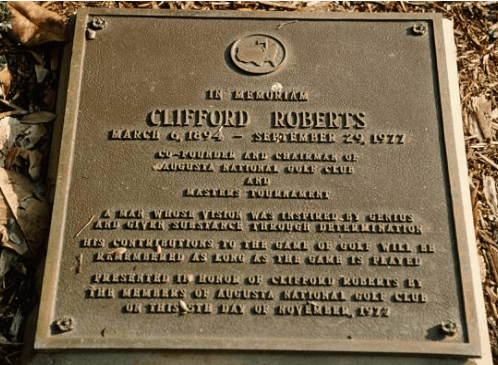
A very sad anniversary as on this day September 29 in 1977 Augusta Co-Founder Clifford Roberts commits suicide by Ike's Pond. A year after stepping down, Roberts committed suicide by gunshot in 1977 on the banks of Ike's Pond on the Par-3 course at Augusta National. At age 83, he had been in ill health for several months with cancer and had a debilitating stroke. Both of his parents had also committed suicide.
Several weeks later, a bronze plaque in his honor was unveiled at the clubhouse entrance
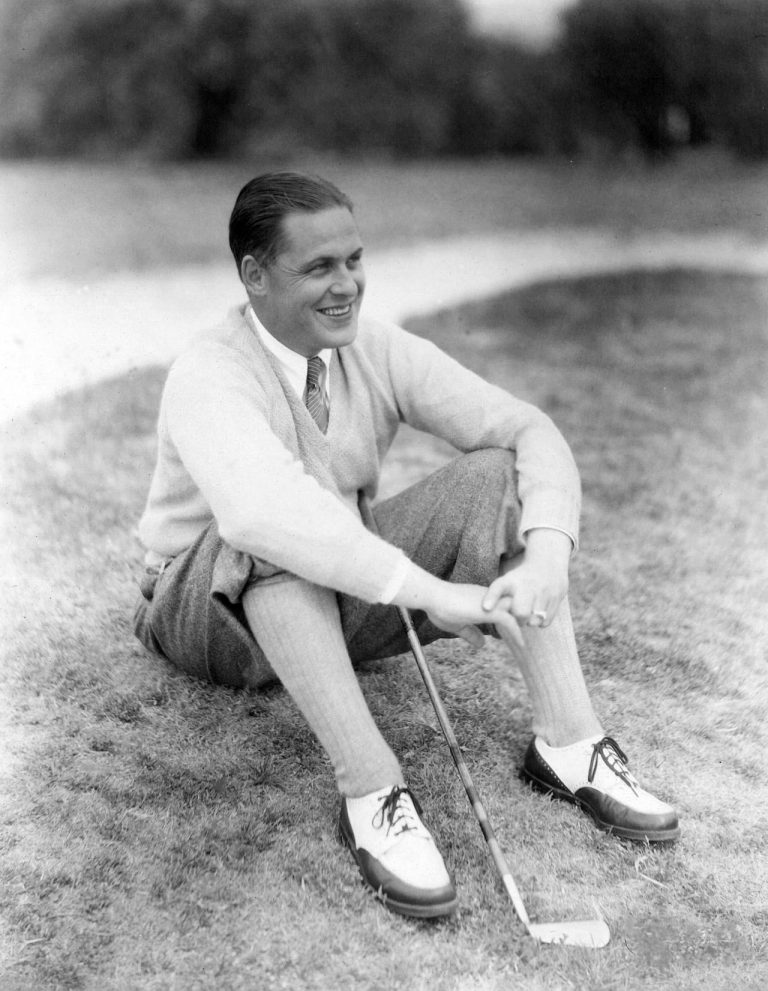
2020 marked the 90th anniversary of the Grand Slam victory. His very long list of accomplishments include becoming the founder of the Masters Tournament and Augusta National Golf Club, among others.
Being an intensely private man, no one would have ever known that he was battling a disease that was slowly robbing him of the athletic powers that made him one of the greatest athletes of his generation... Yet, this private man had been forced by celebrity to live in the limelight. In the latter half of his life, he was confronted with syringomyelia, a devastating disease of the nervous system. He was a man who neither wanted sympathy, nor patronization. He simply wanted a semblance of normalcy, a normal life that his abilities as a golfer had denied him.
He had acquired syringomyelia in a freak accident during a thunderstorm in 1929. His symptoms became noticeable in 1948 and finally diagnosed in 1950.
Over the ensuing years, he would go from leg braces, to a cane, to a walker, to a wheelchair, and, finally, to a bed. As his condition deteriorated, his physical symptoms became too much to hide. Yet, even in the face of increasing disability, he continued to carry on as much as he could with the normal activities of life. After all, as he would say often, "In life, as in golf, you play the ball where you find it."
That attitude, that spirit of sportsmanship, was what endeared him to golf fans on both sides of the Atlantic. It was the same spirit that touched the many friends and family members who watched him wrestle this implacable foe. His courage, good humor, and grace did not go unnoticed. Bobby Jones would die from his disease twenty-one years later in December of 1971, leaving behind a legacy of excellence, honor, and integrity, that remains unmatched to this day. His family has been committed to preserving and enhancing this precious heritage since then.
https://bobbyjonescsf.org/about-us/about-bobby-jones
